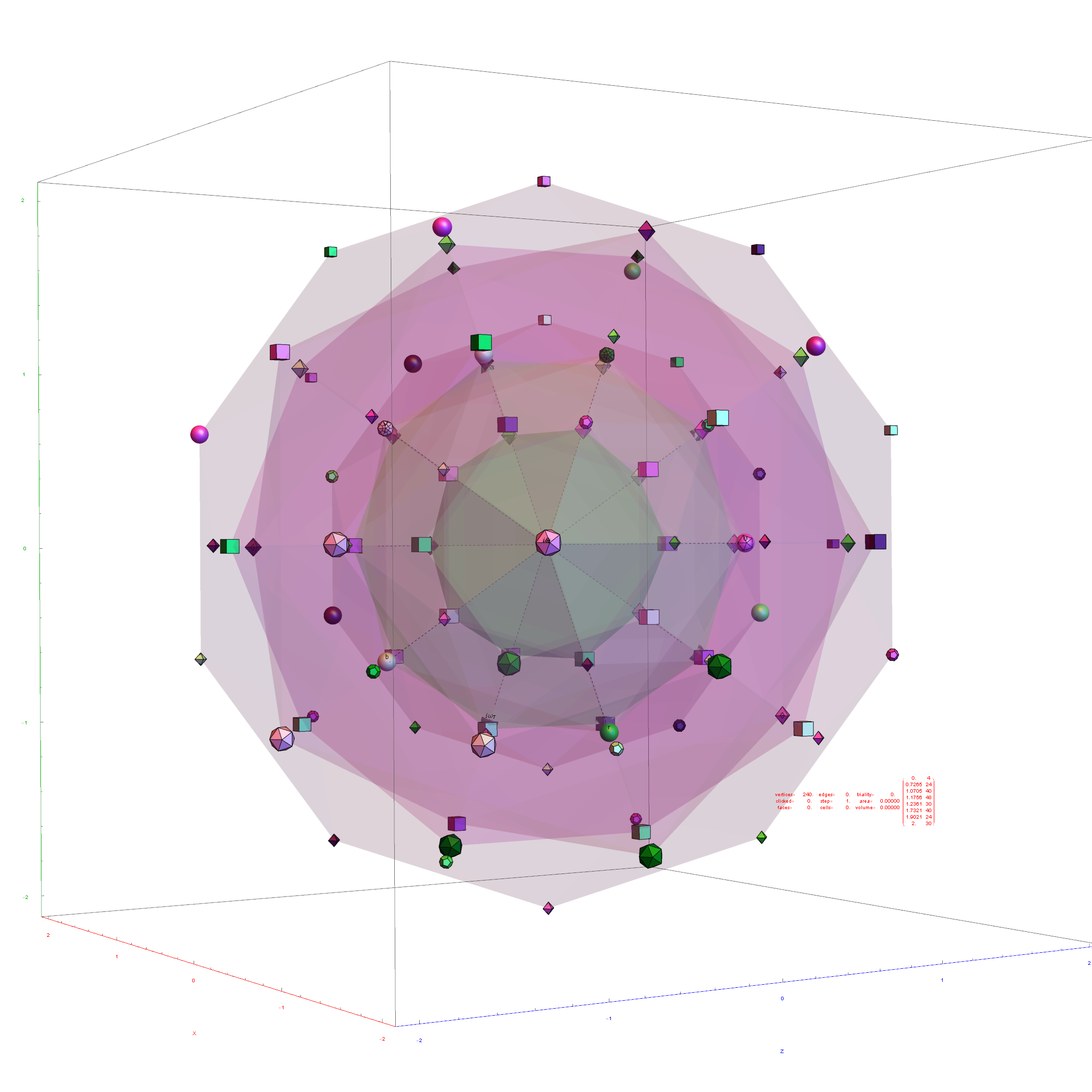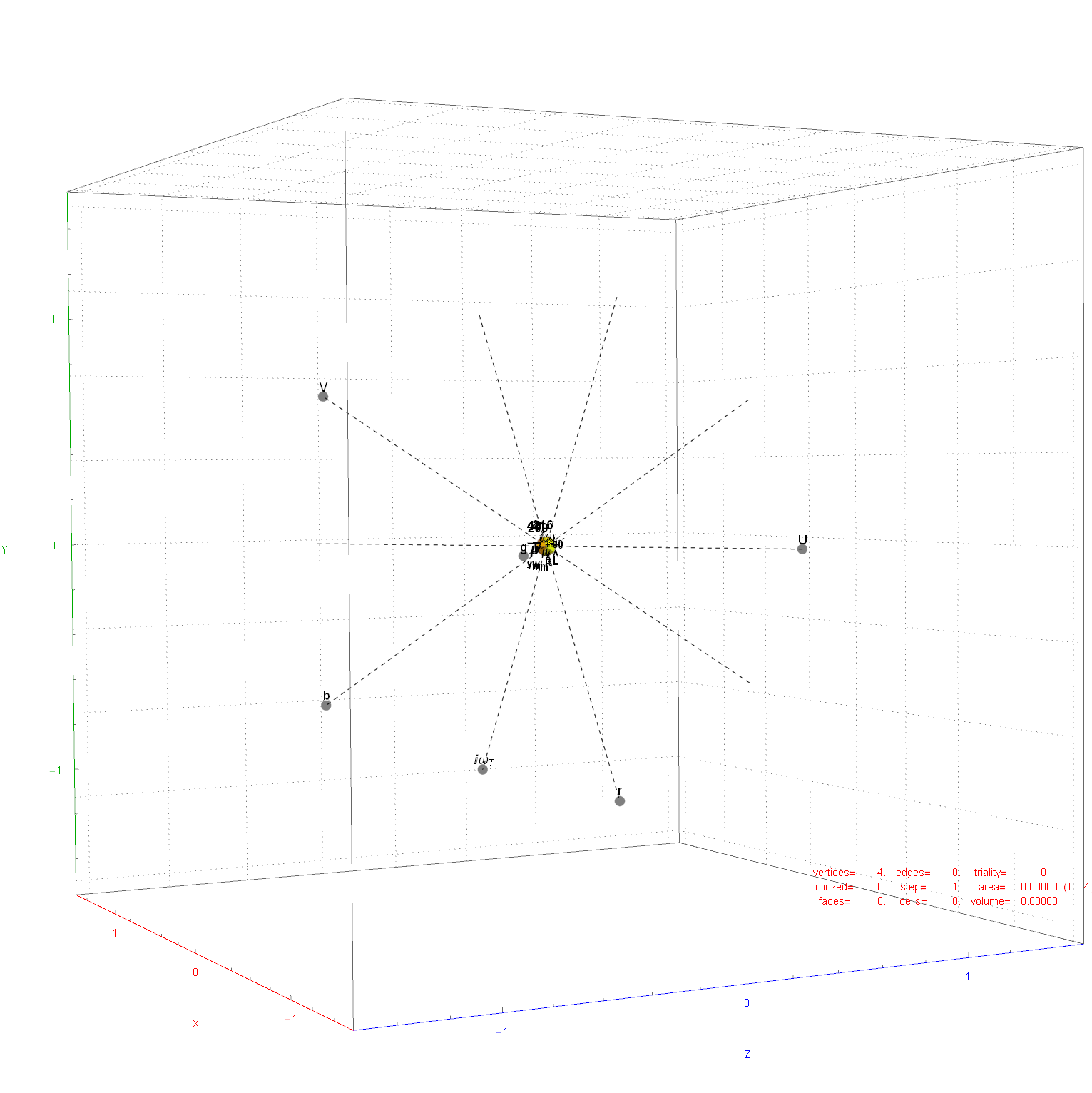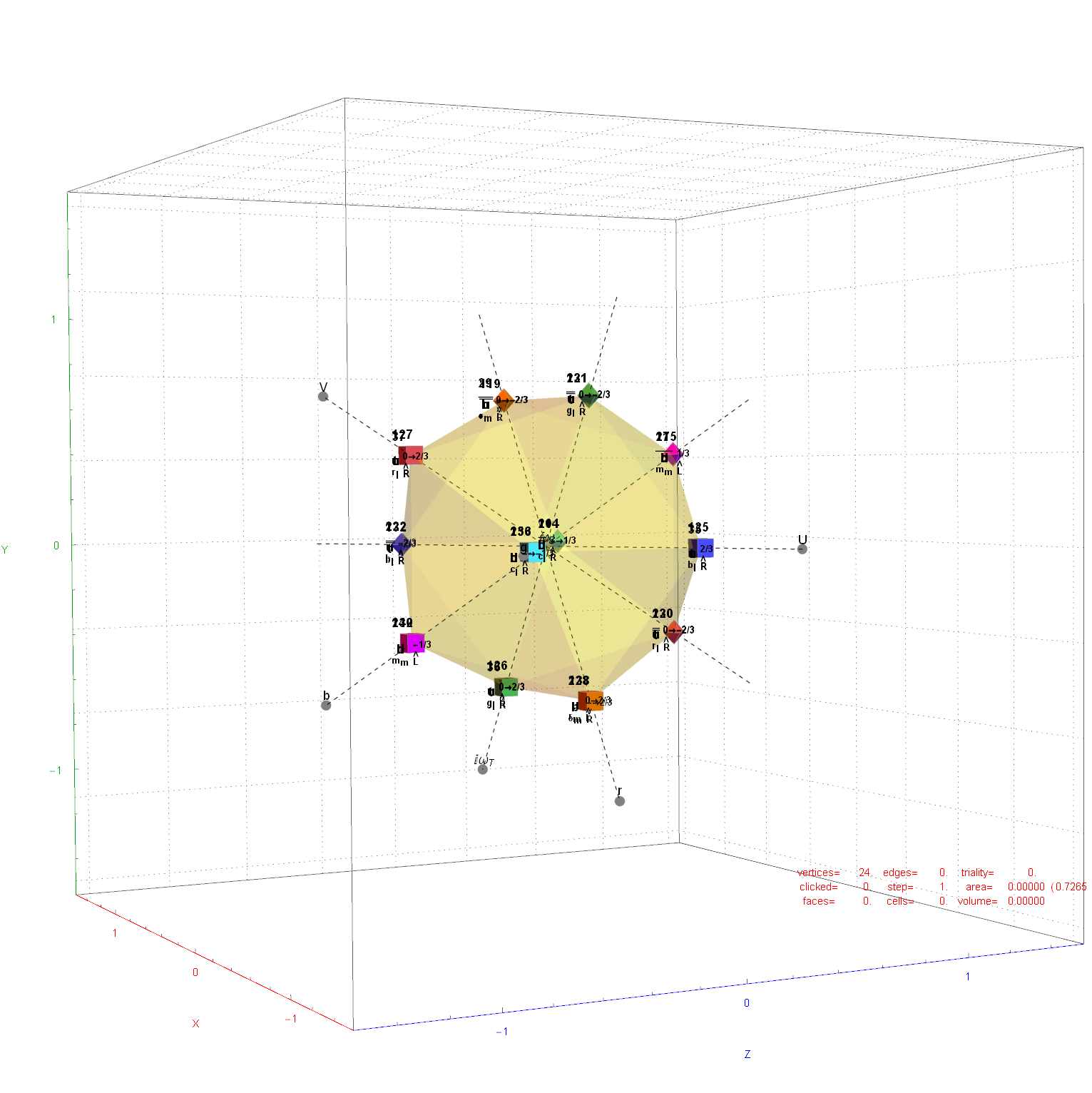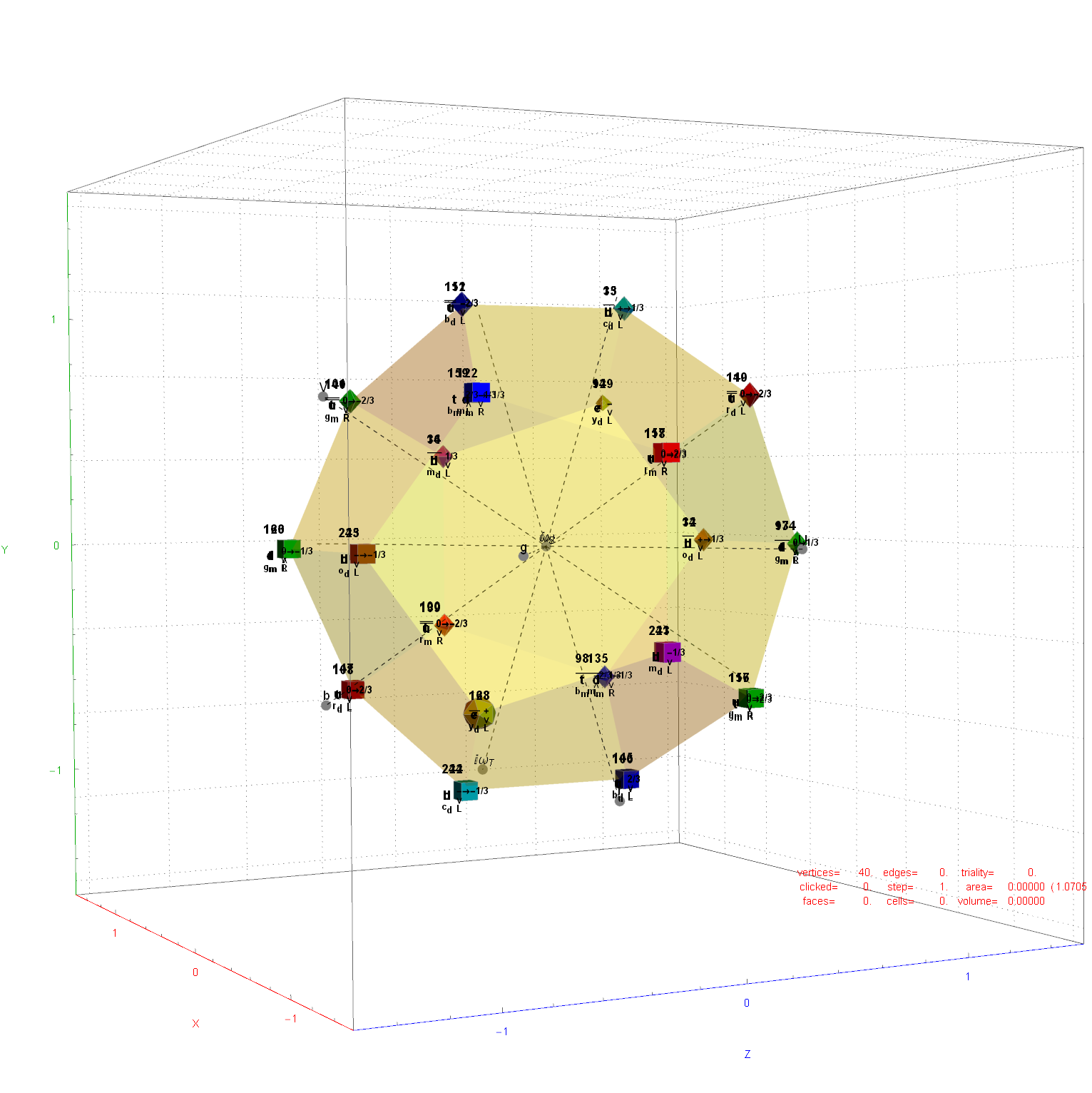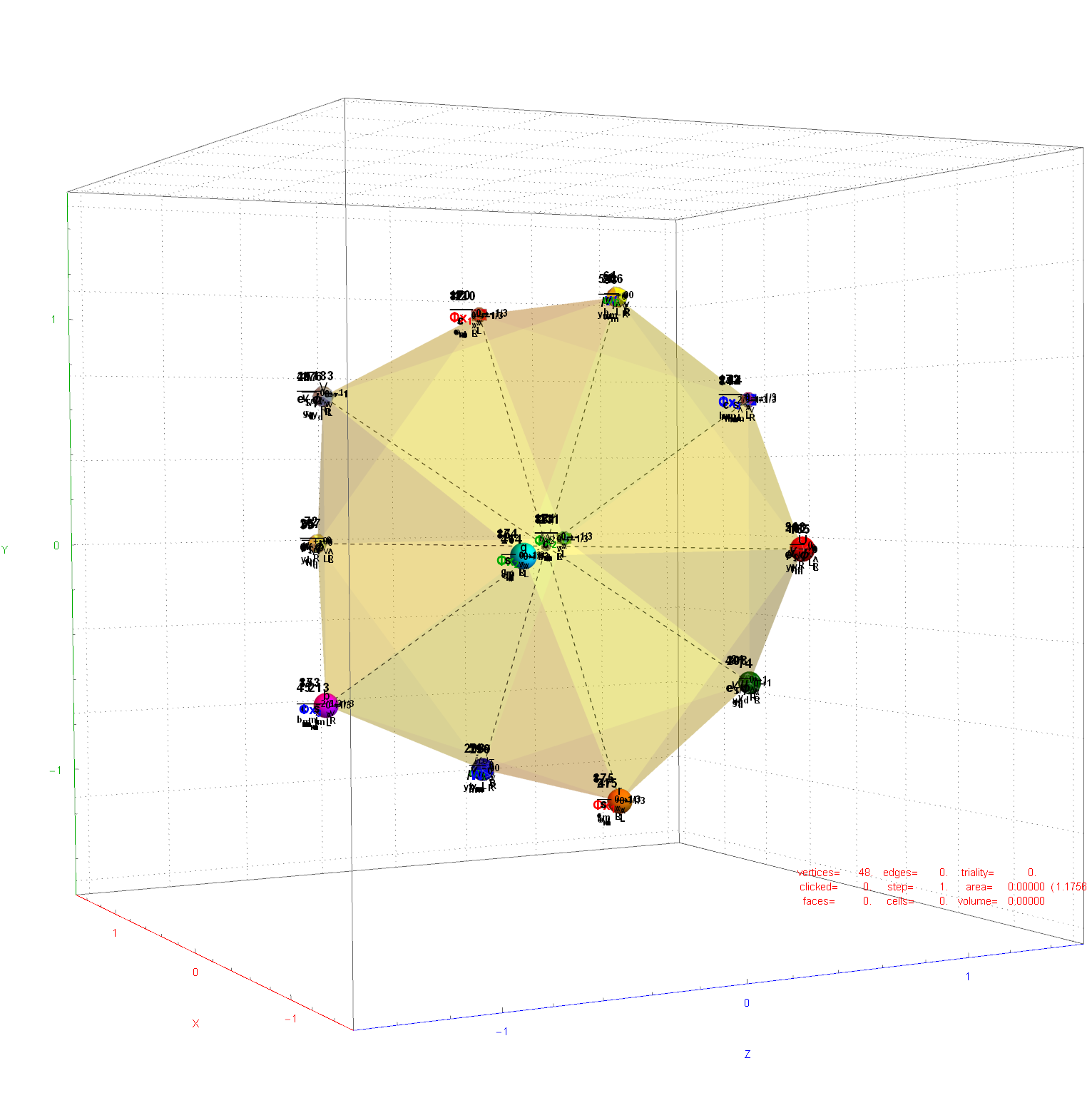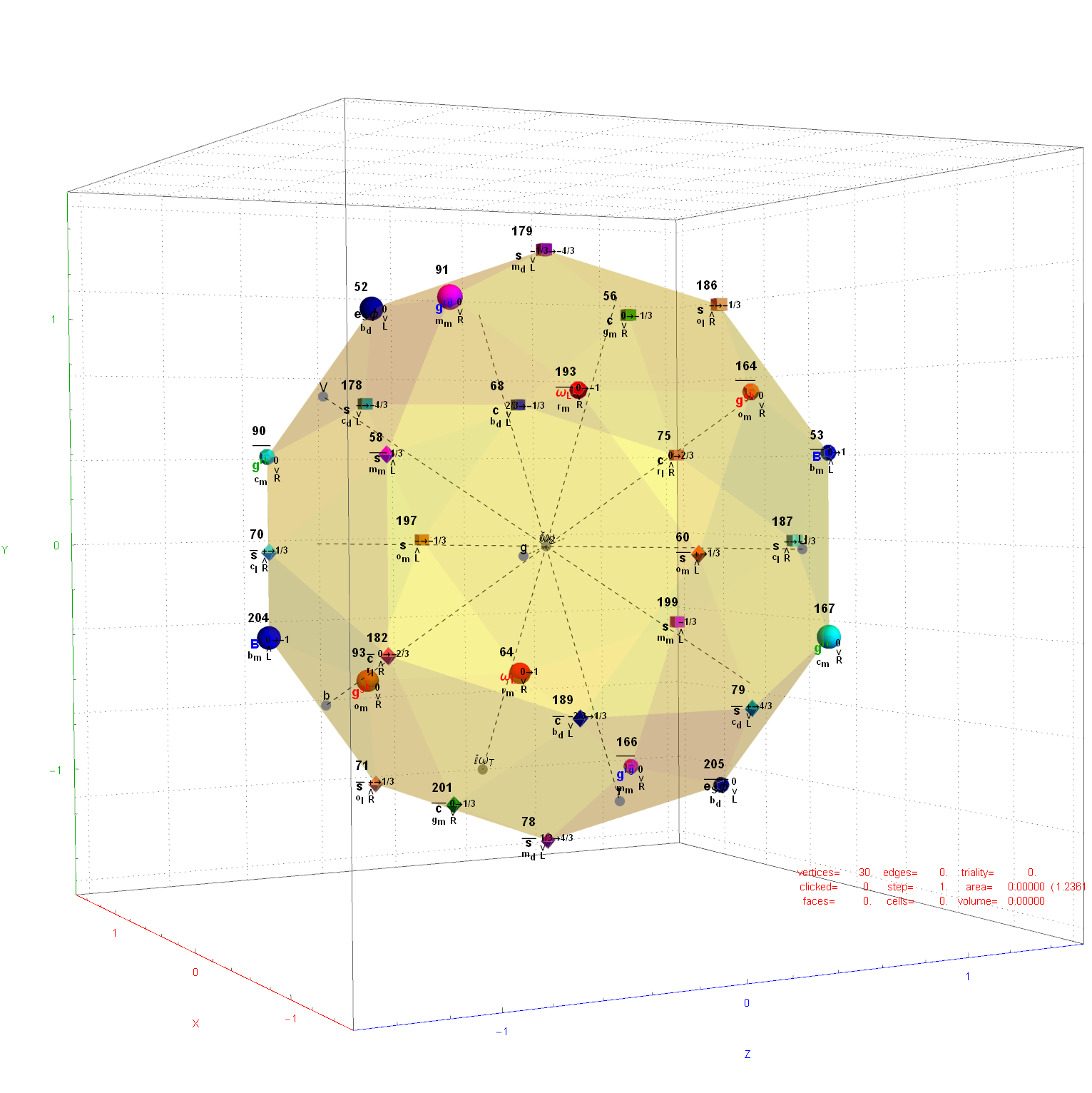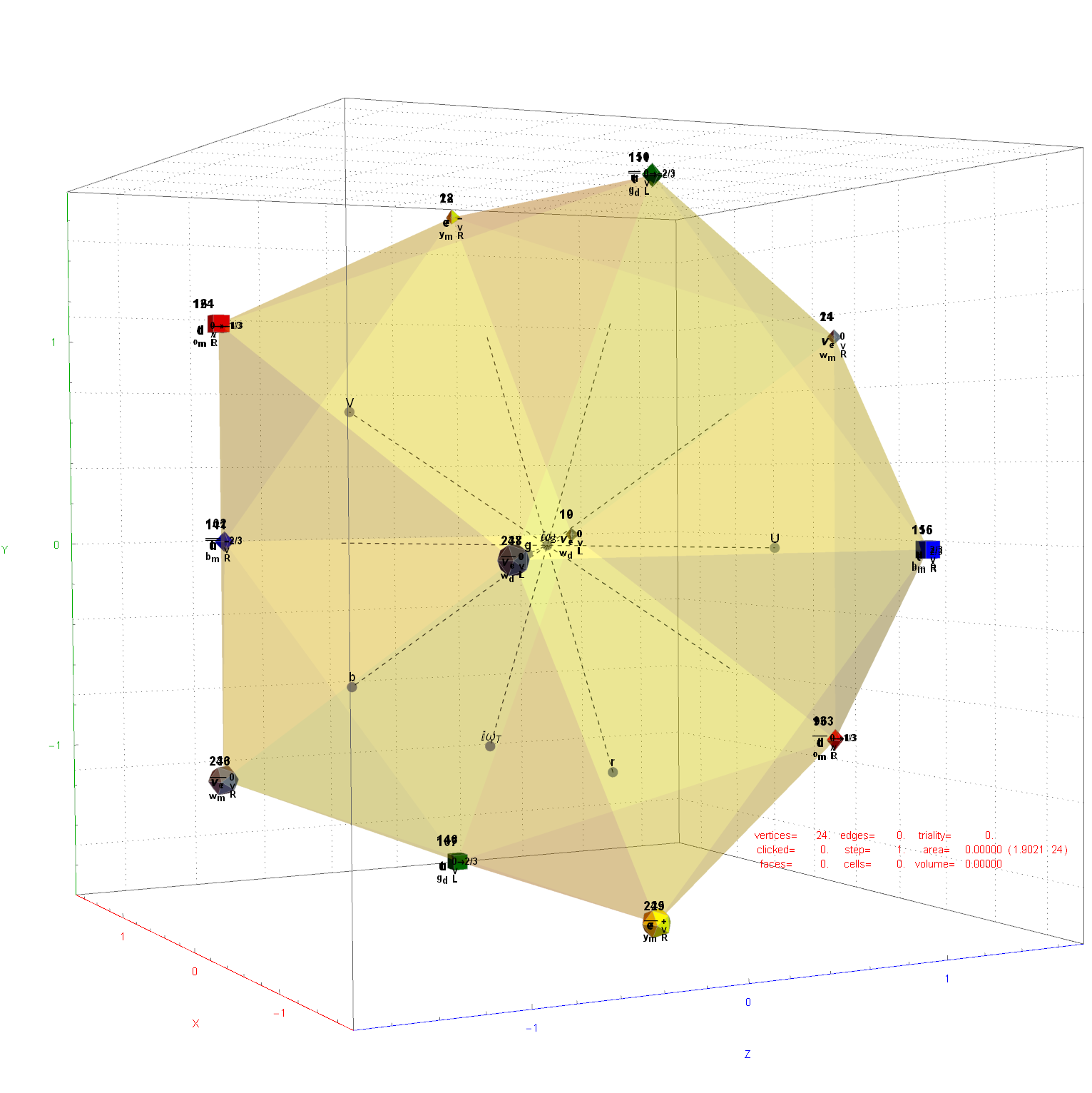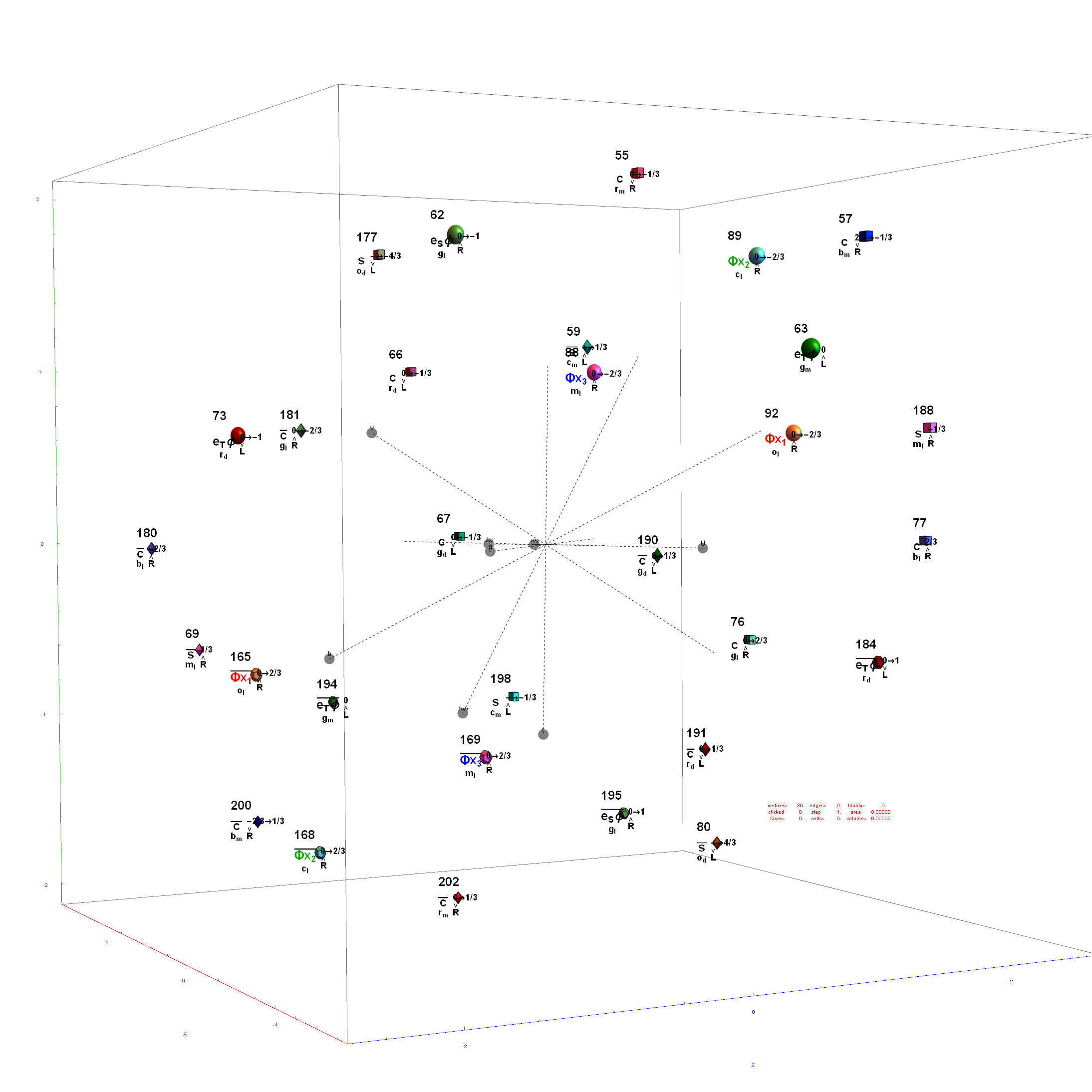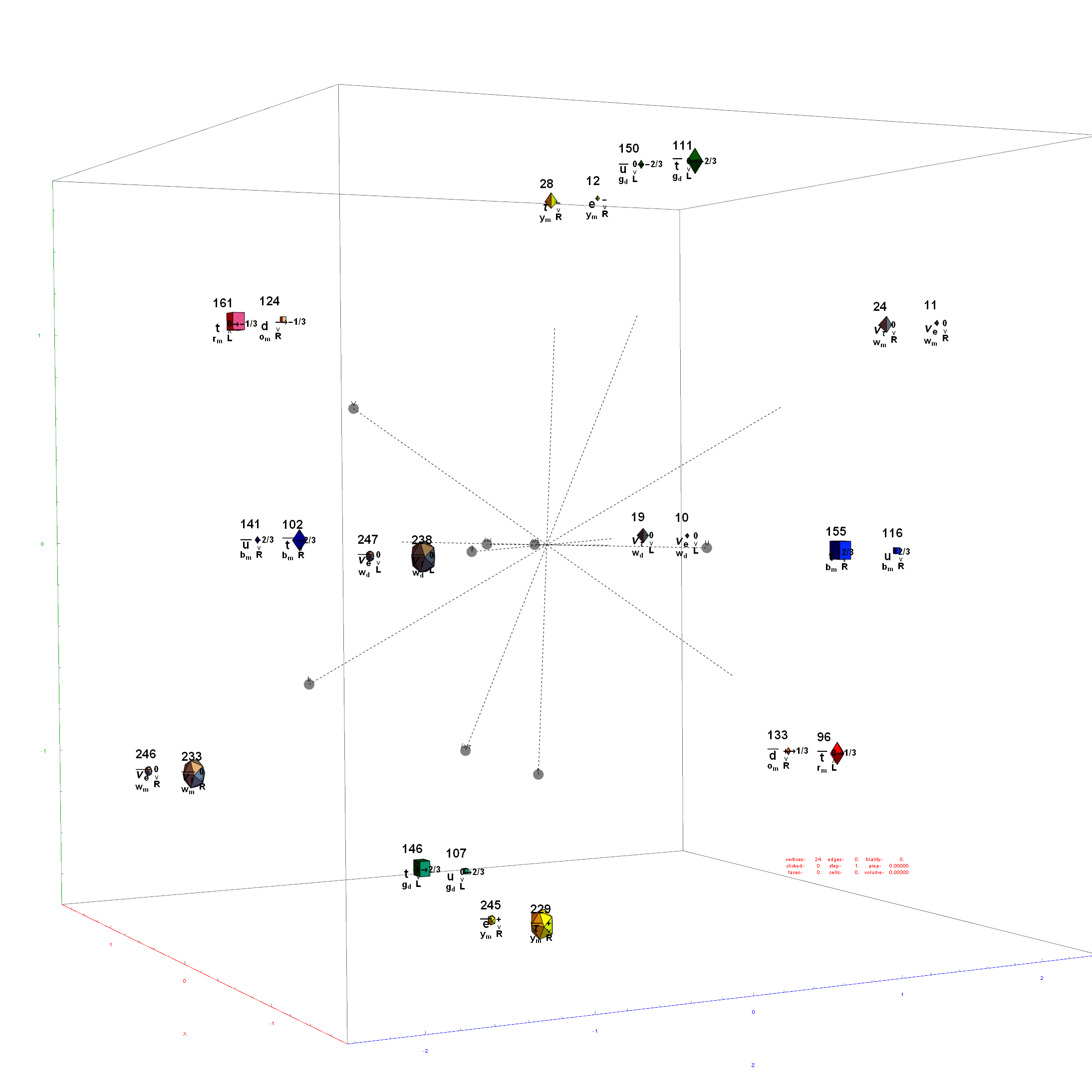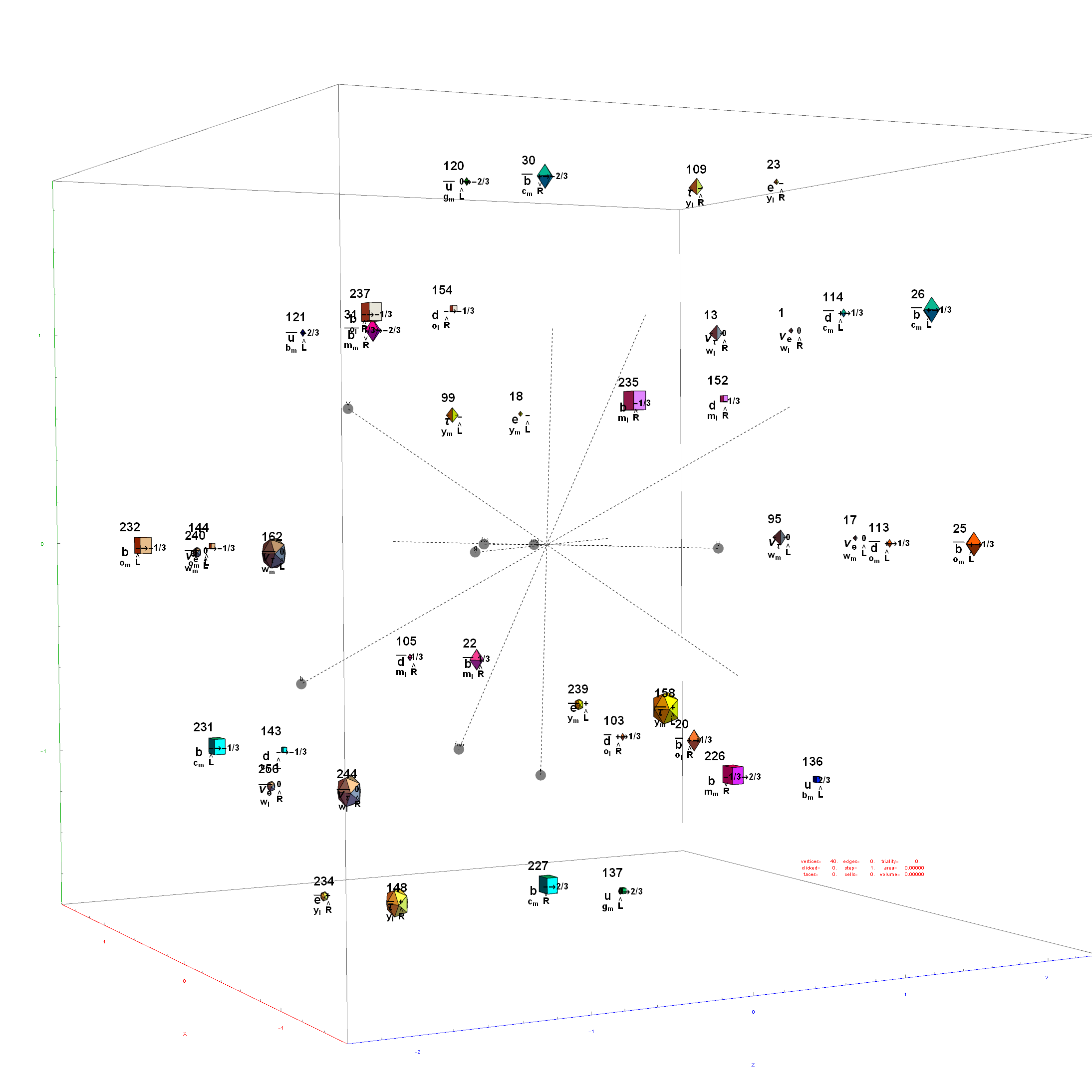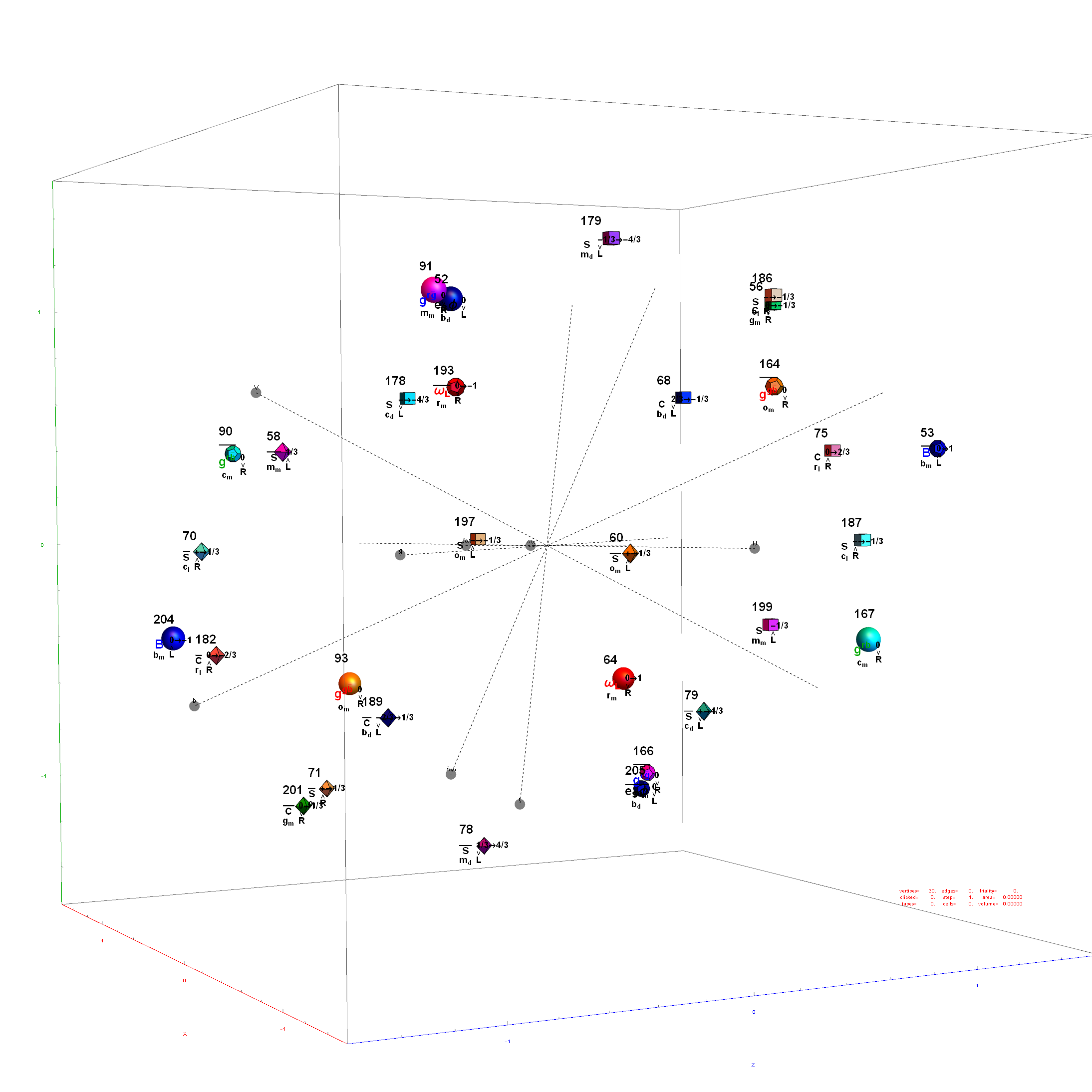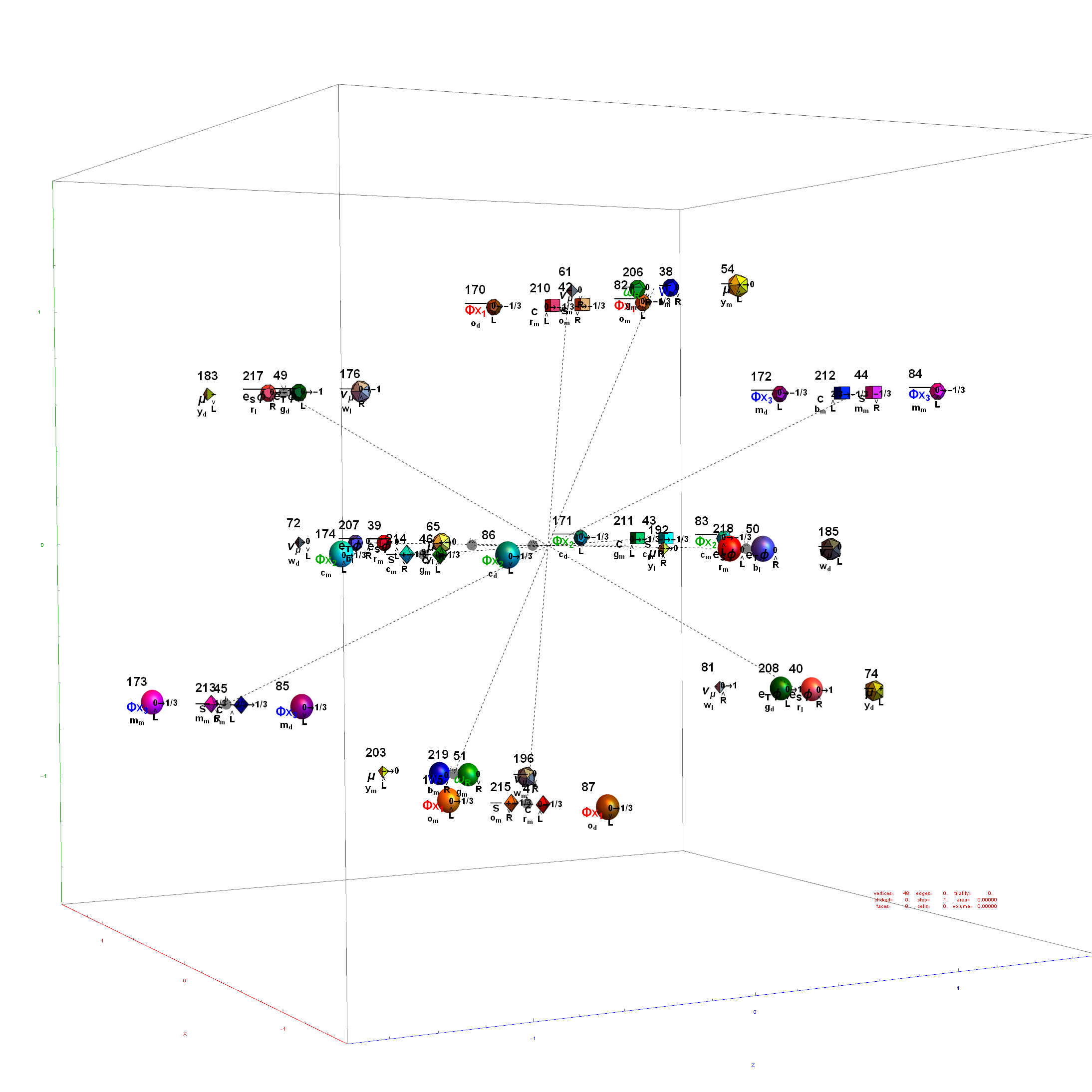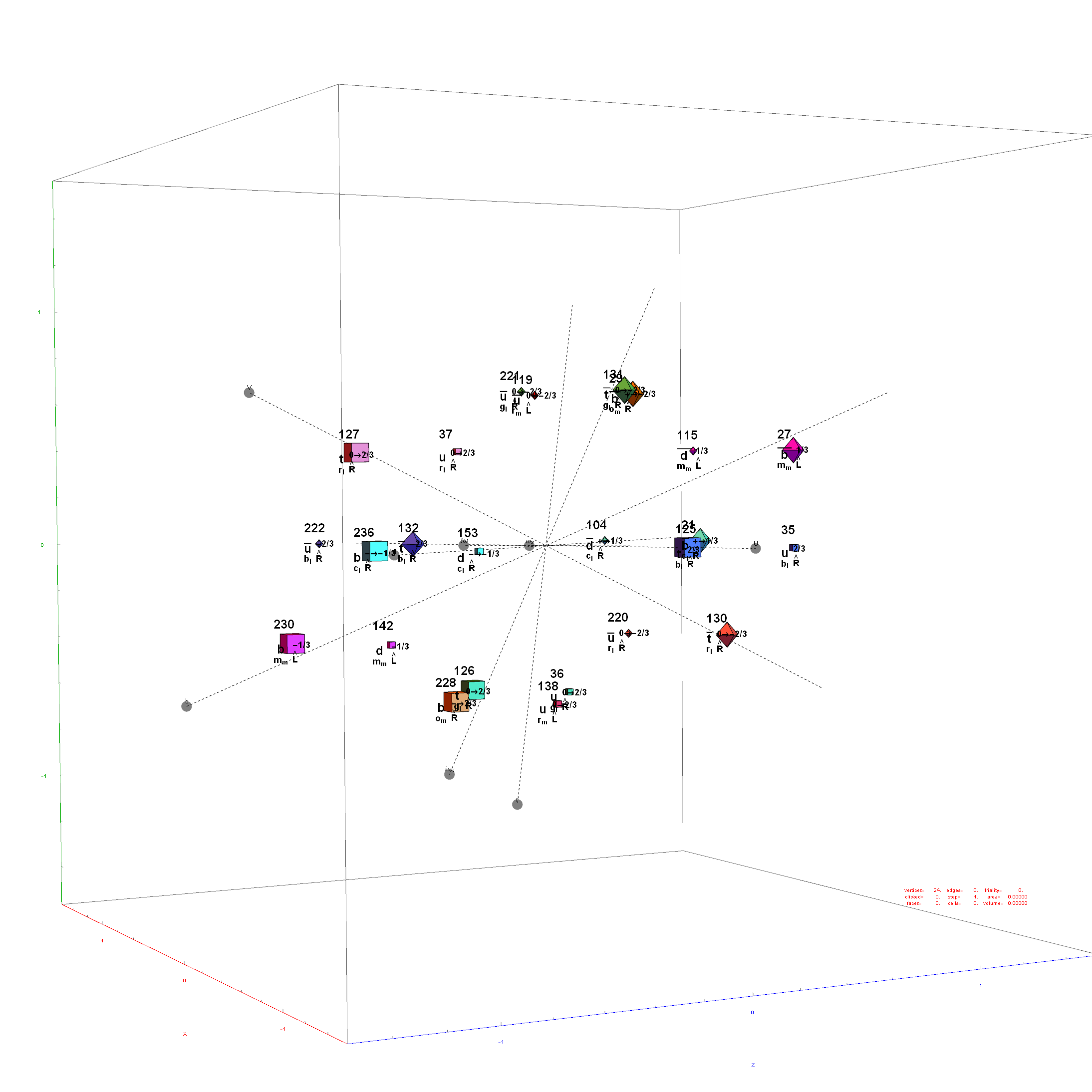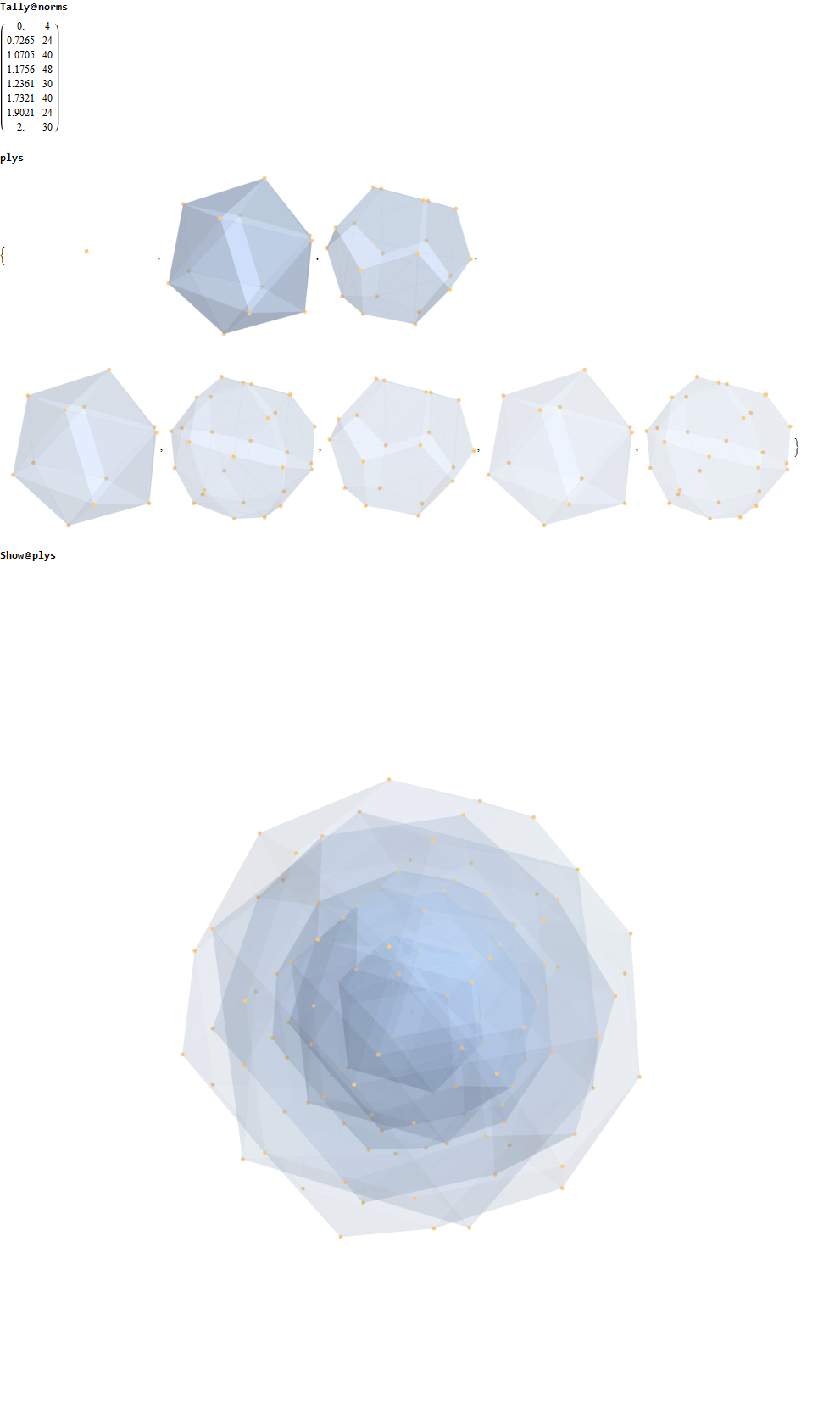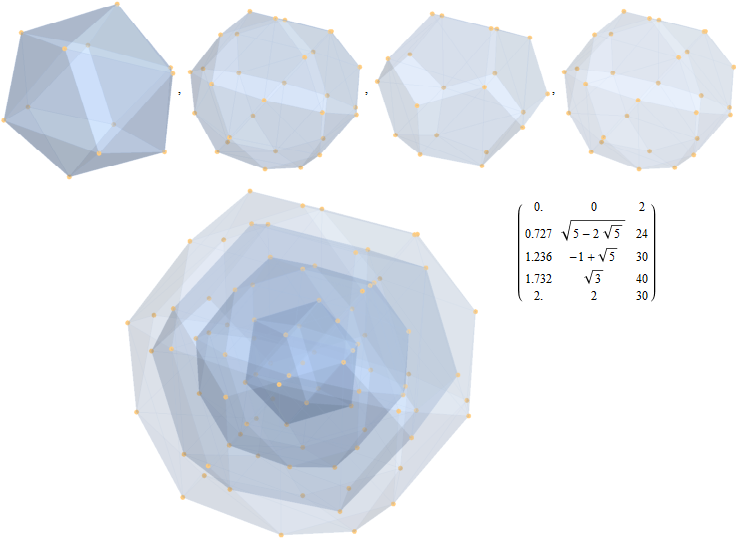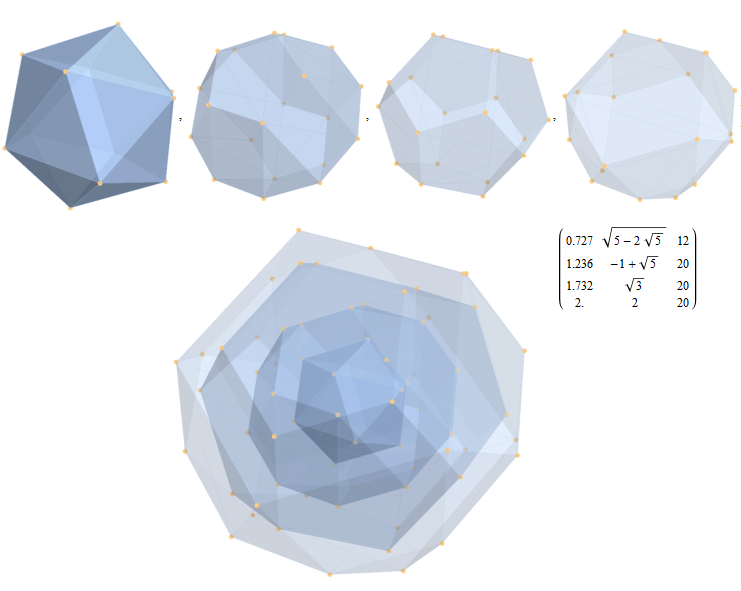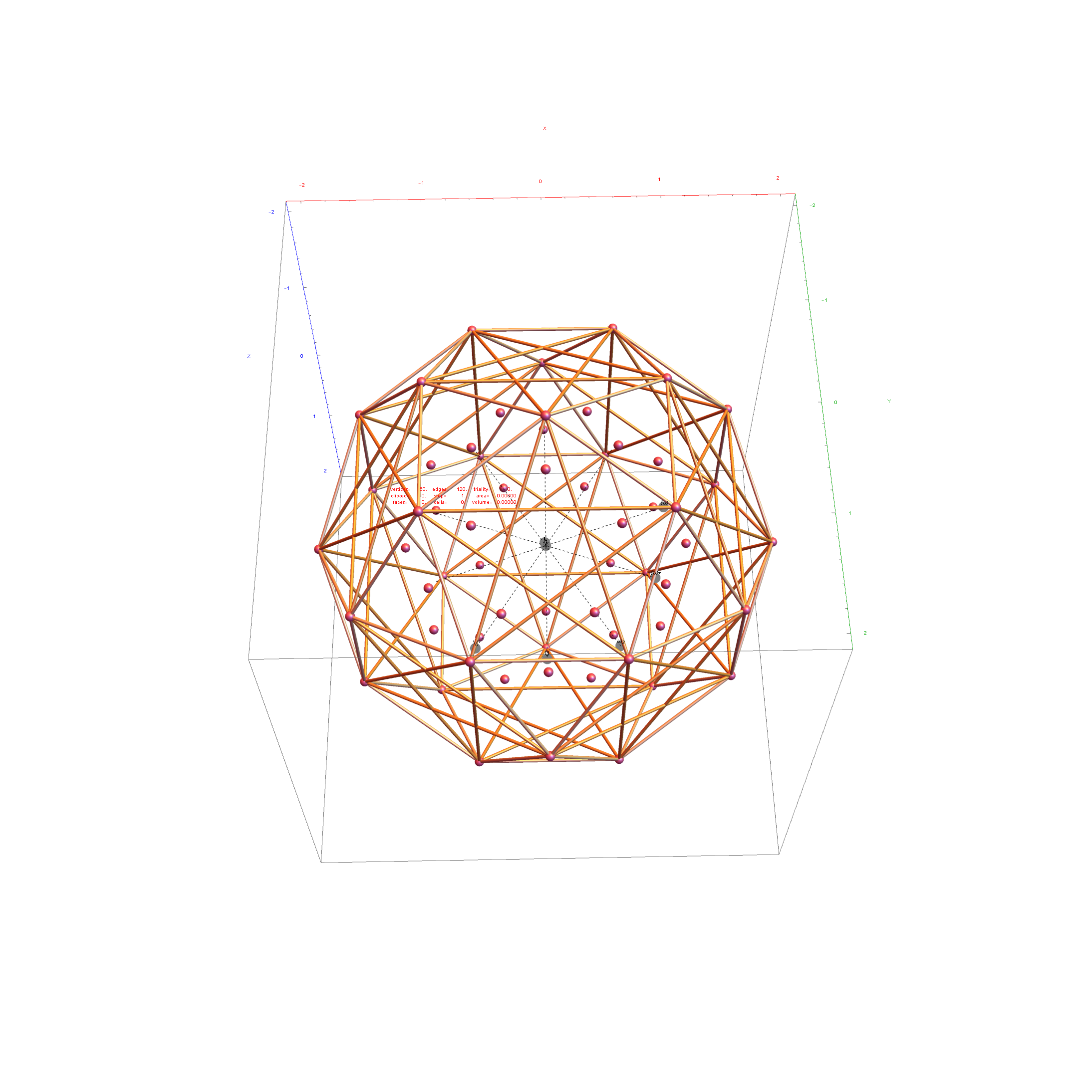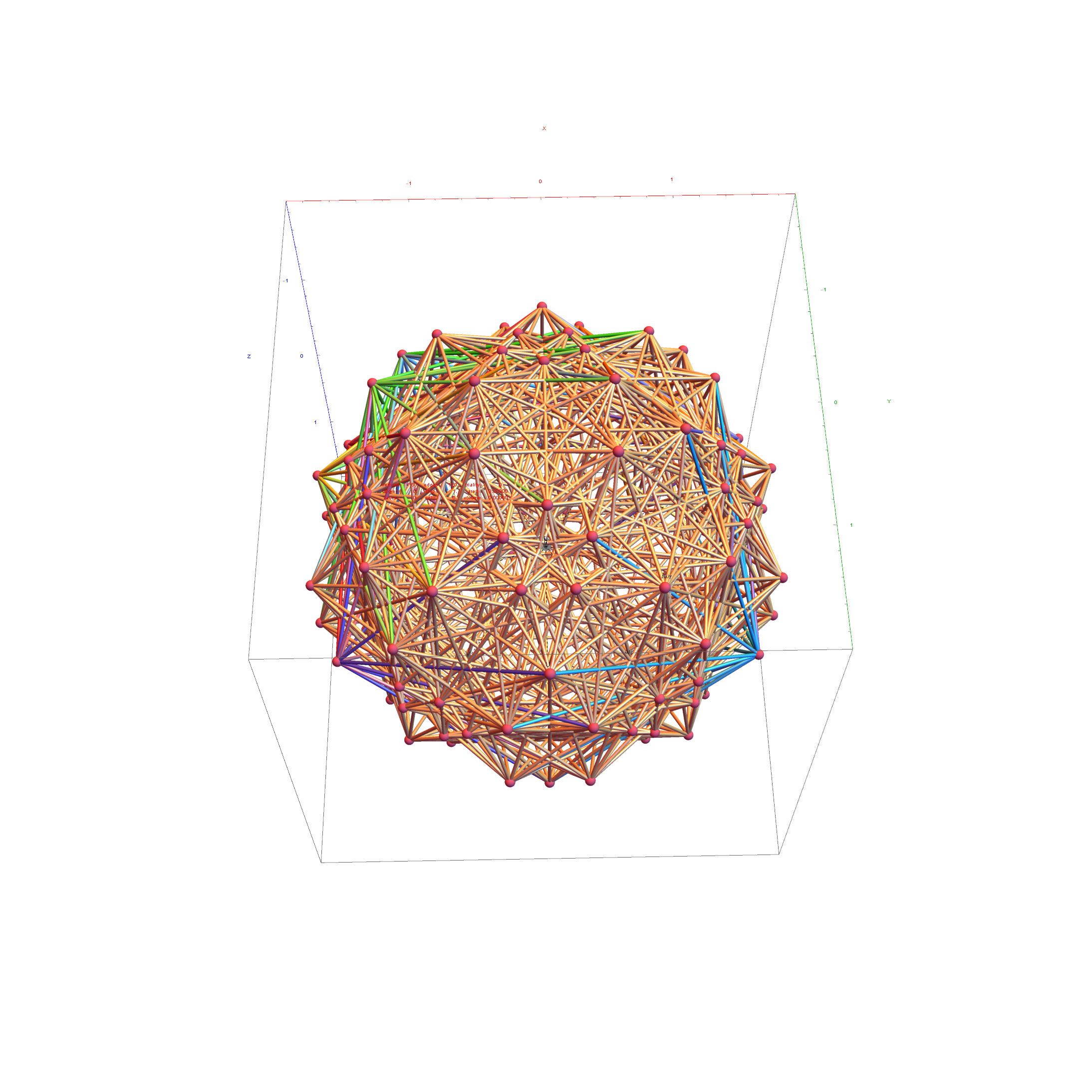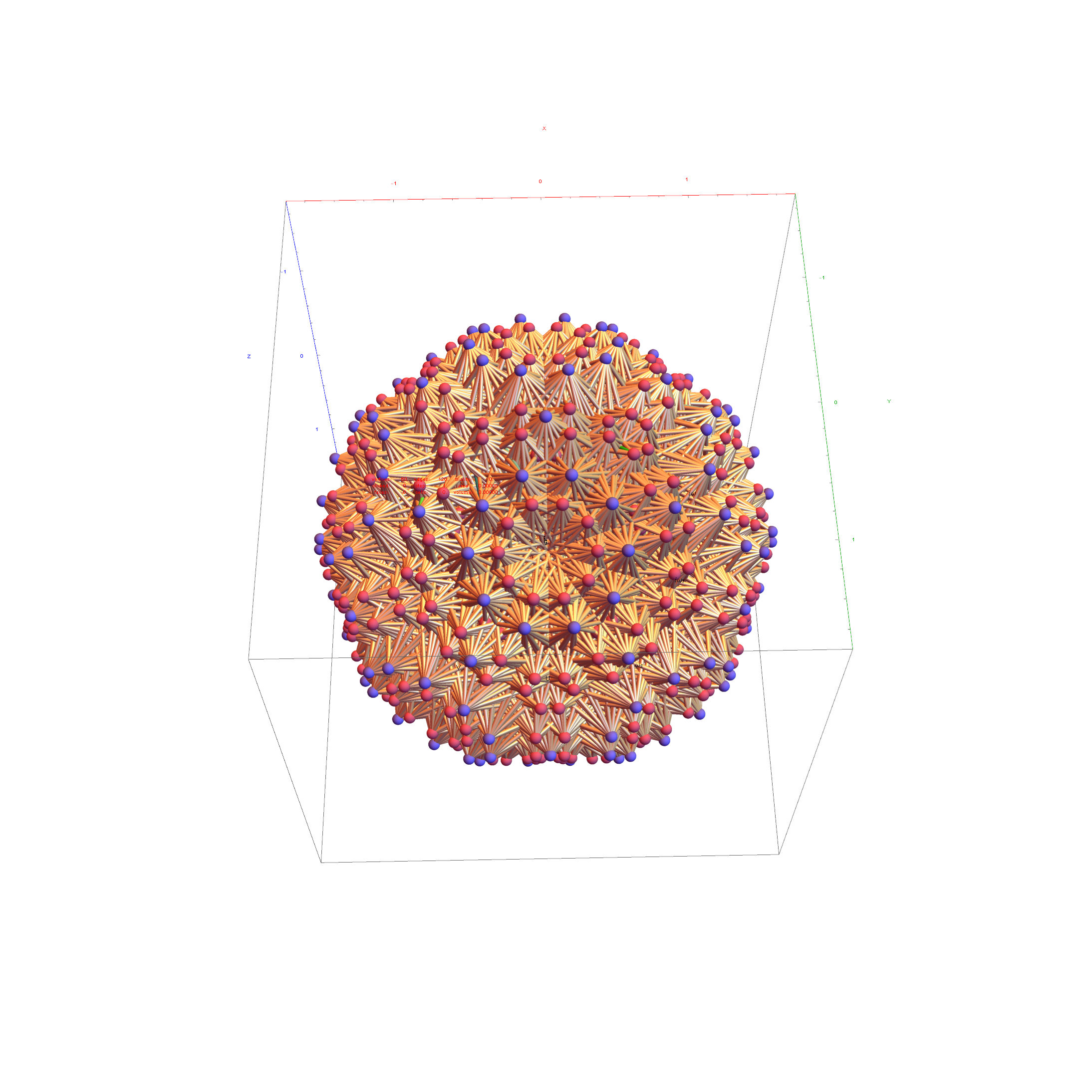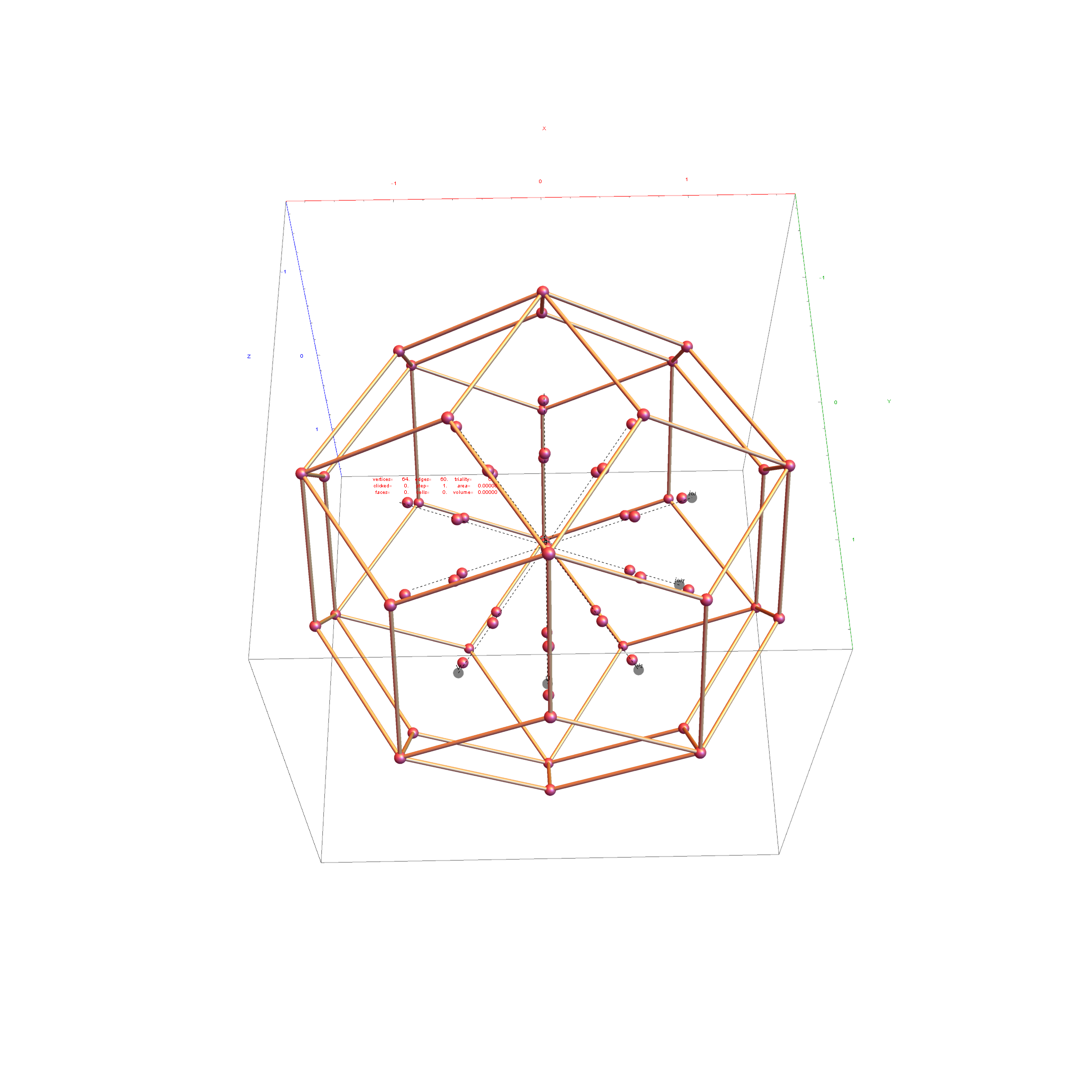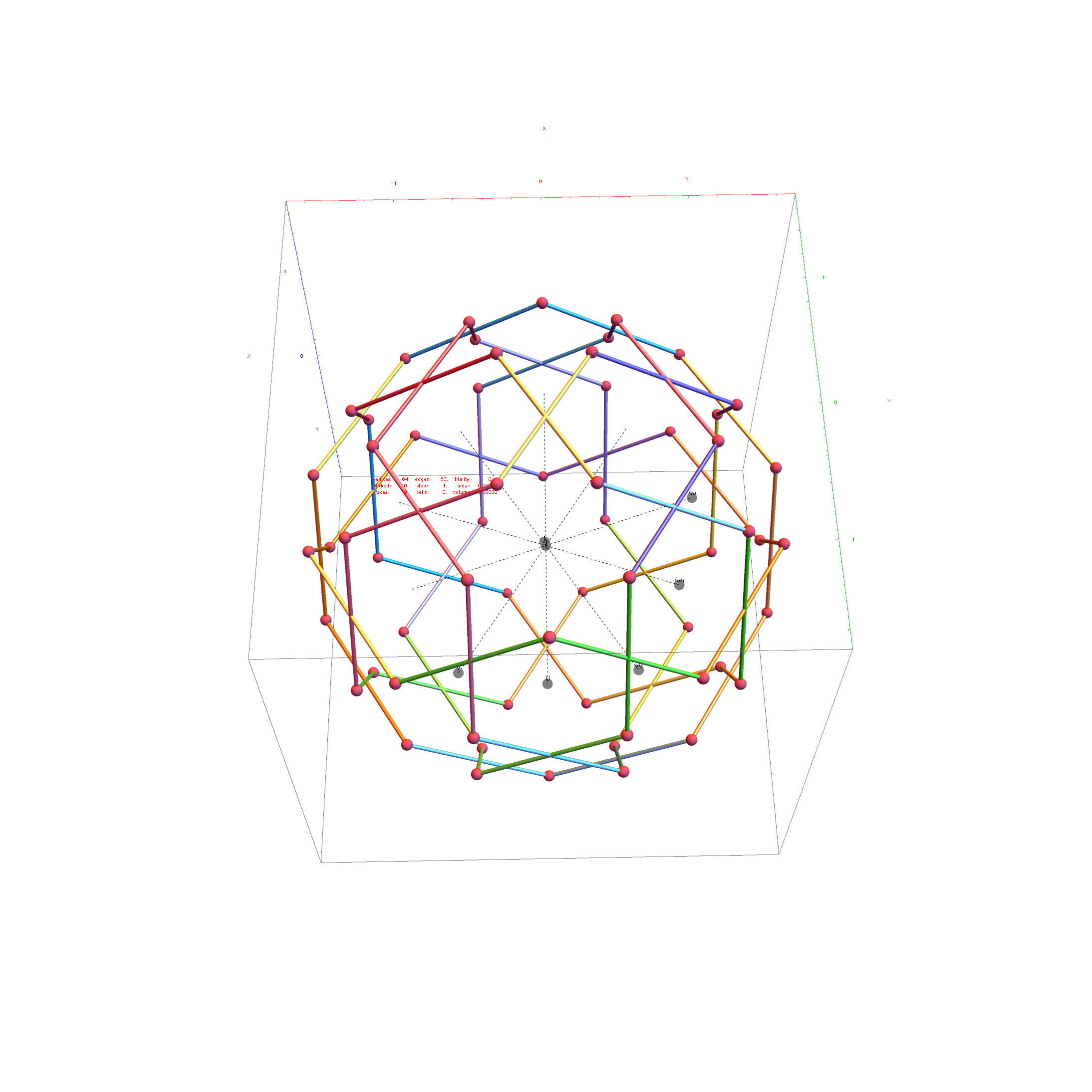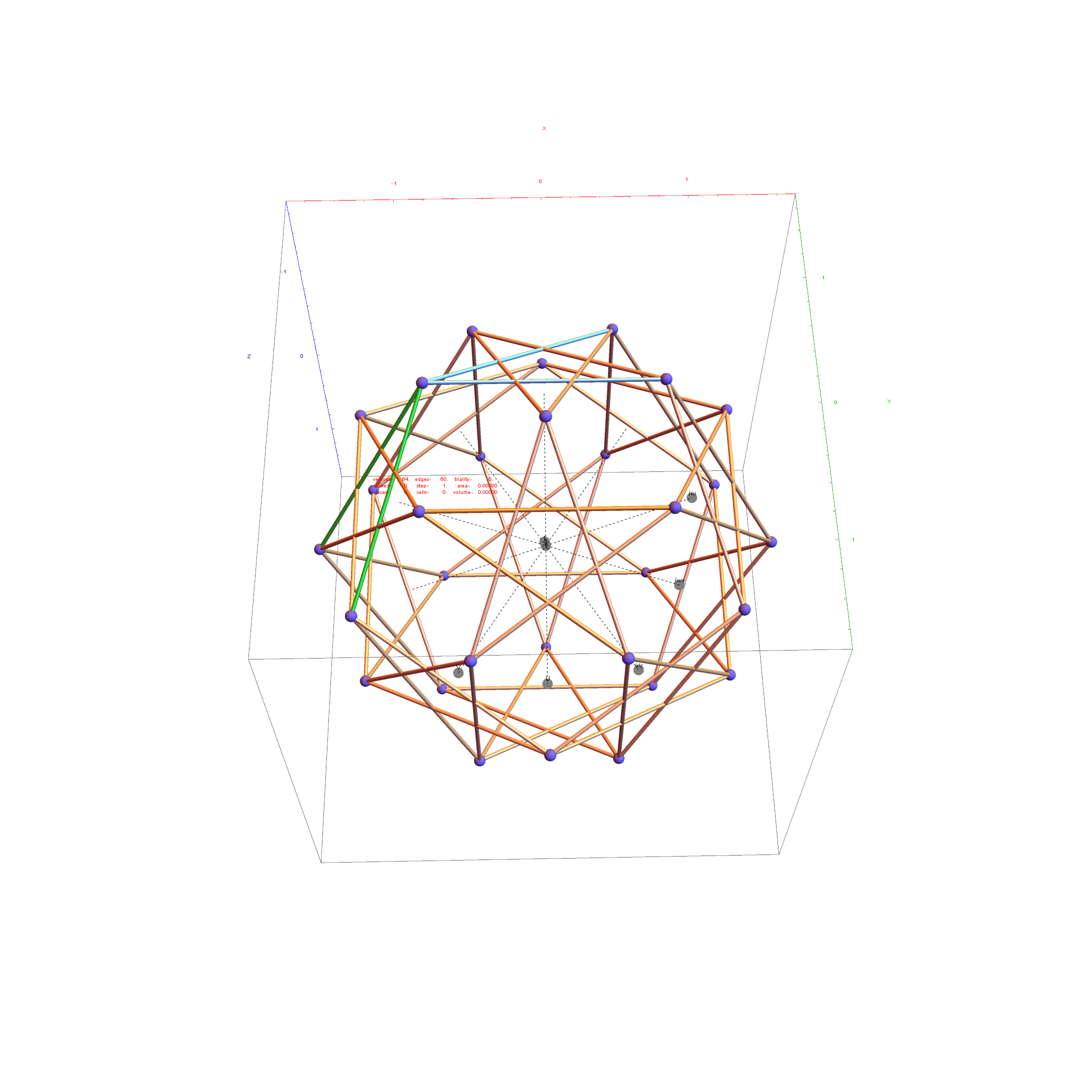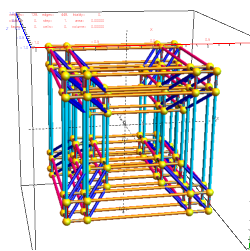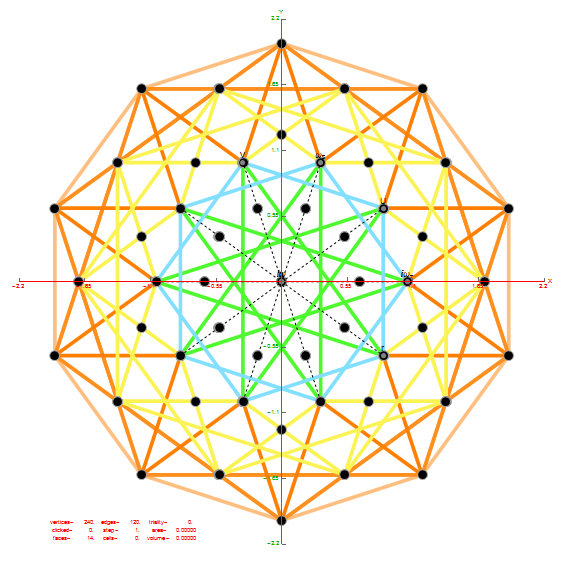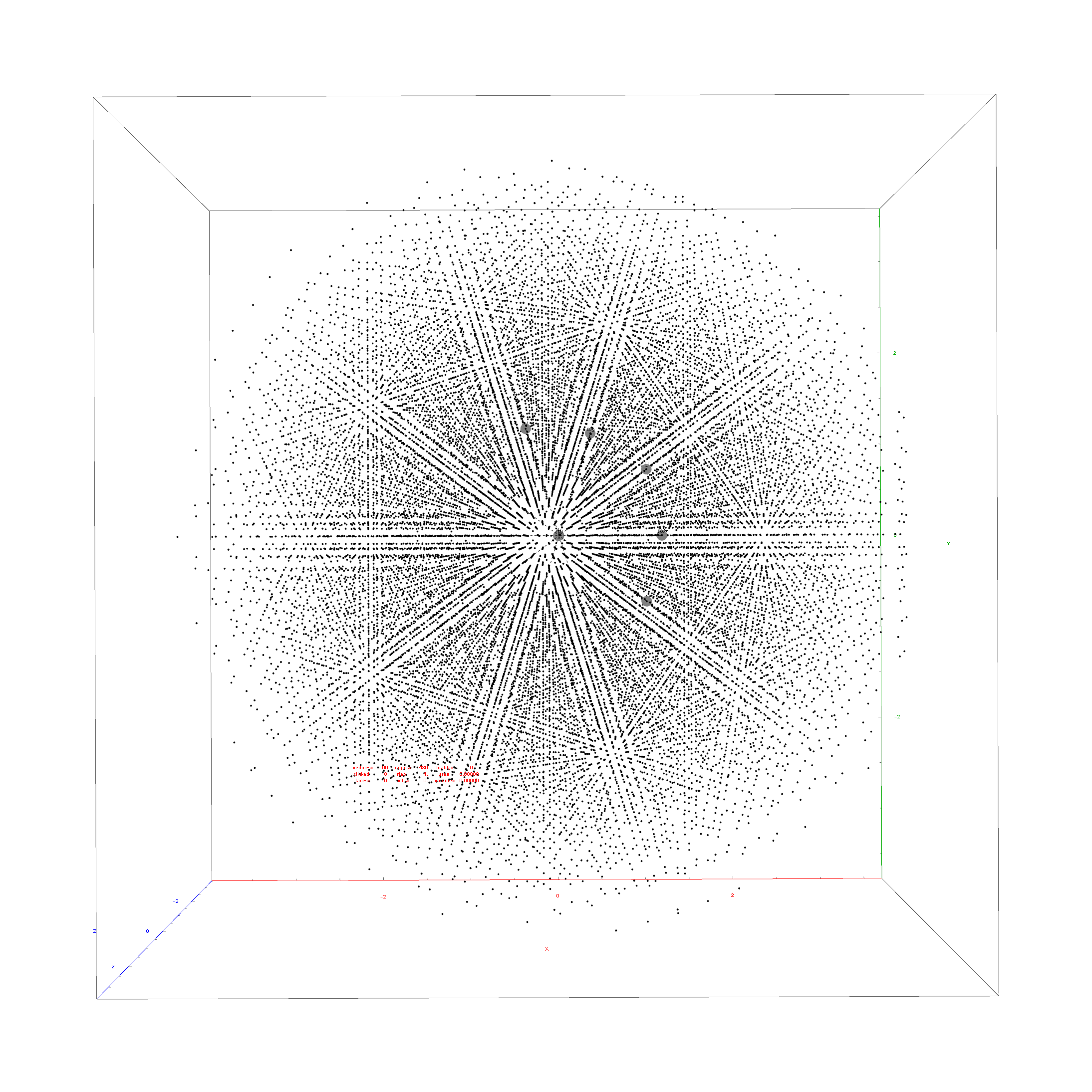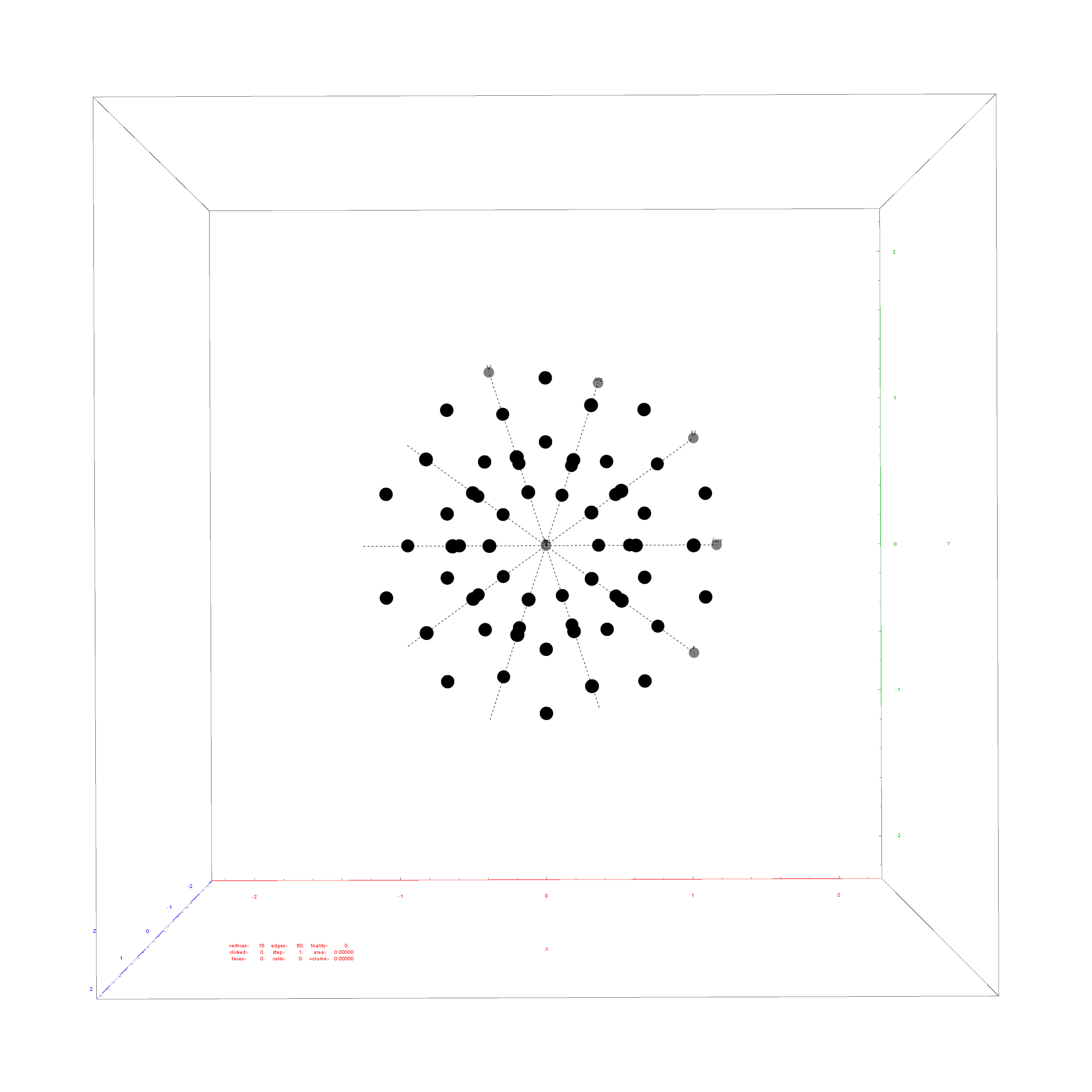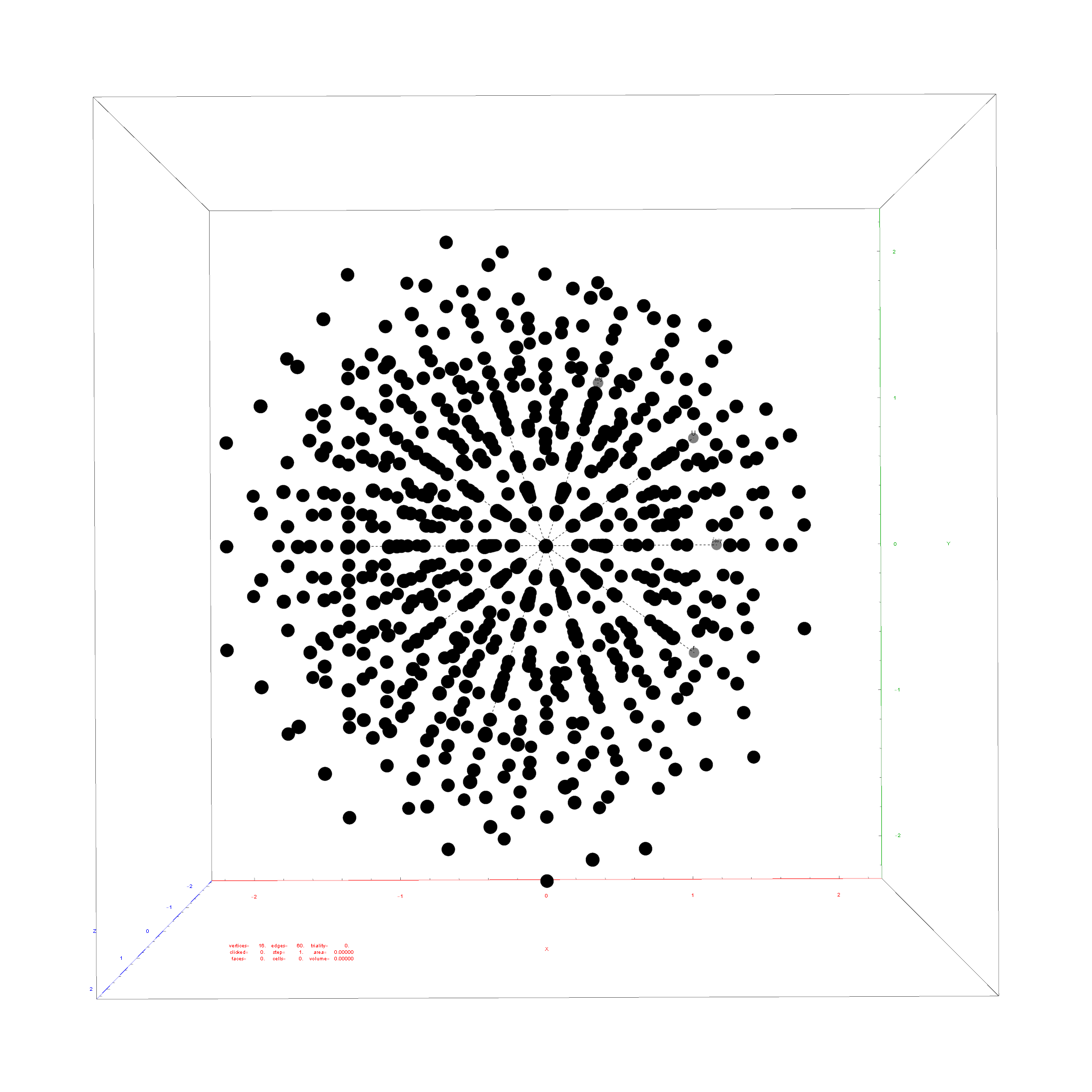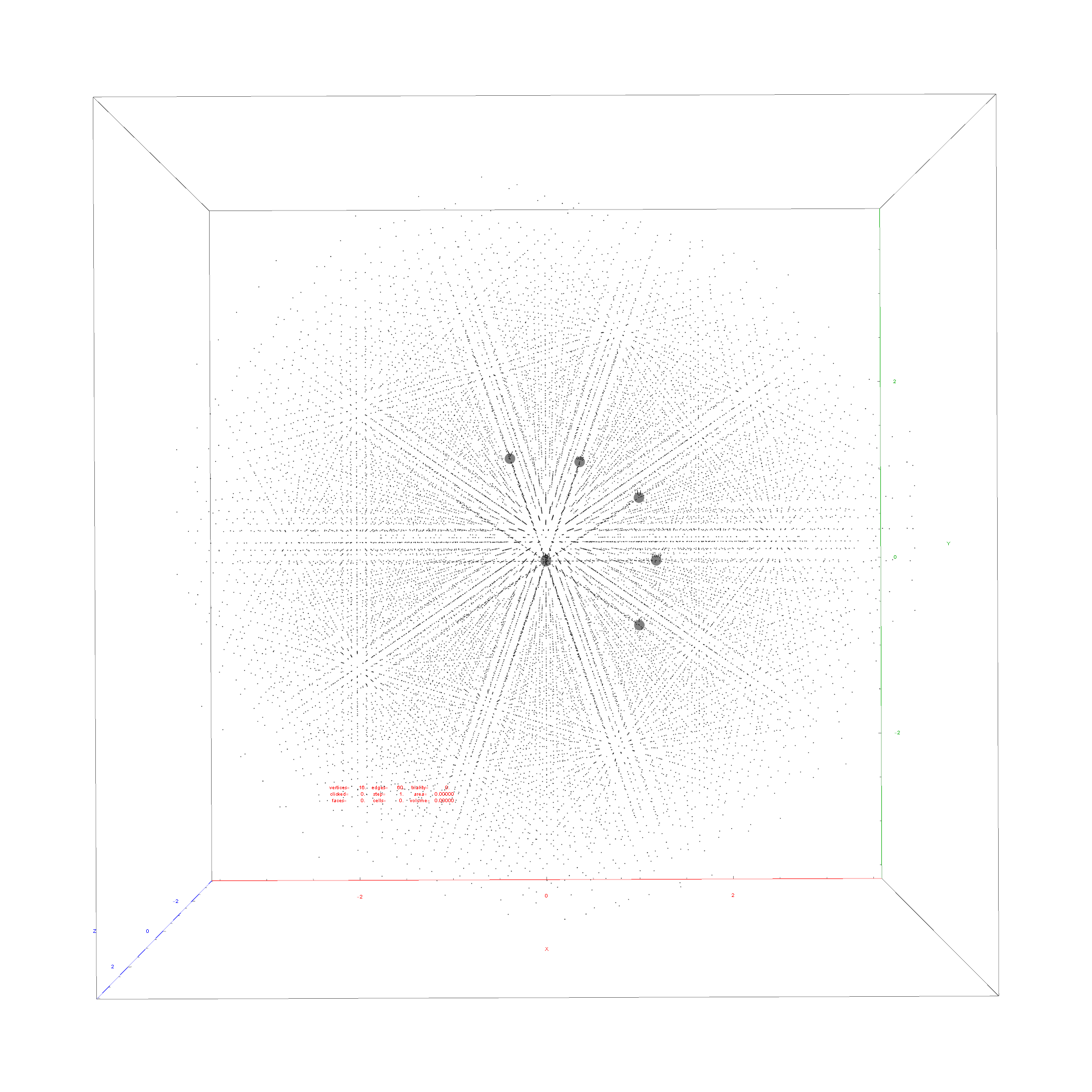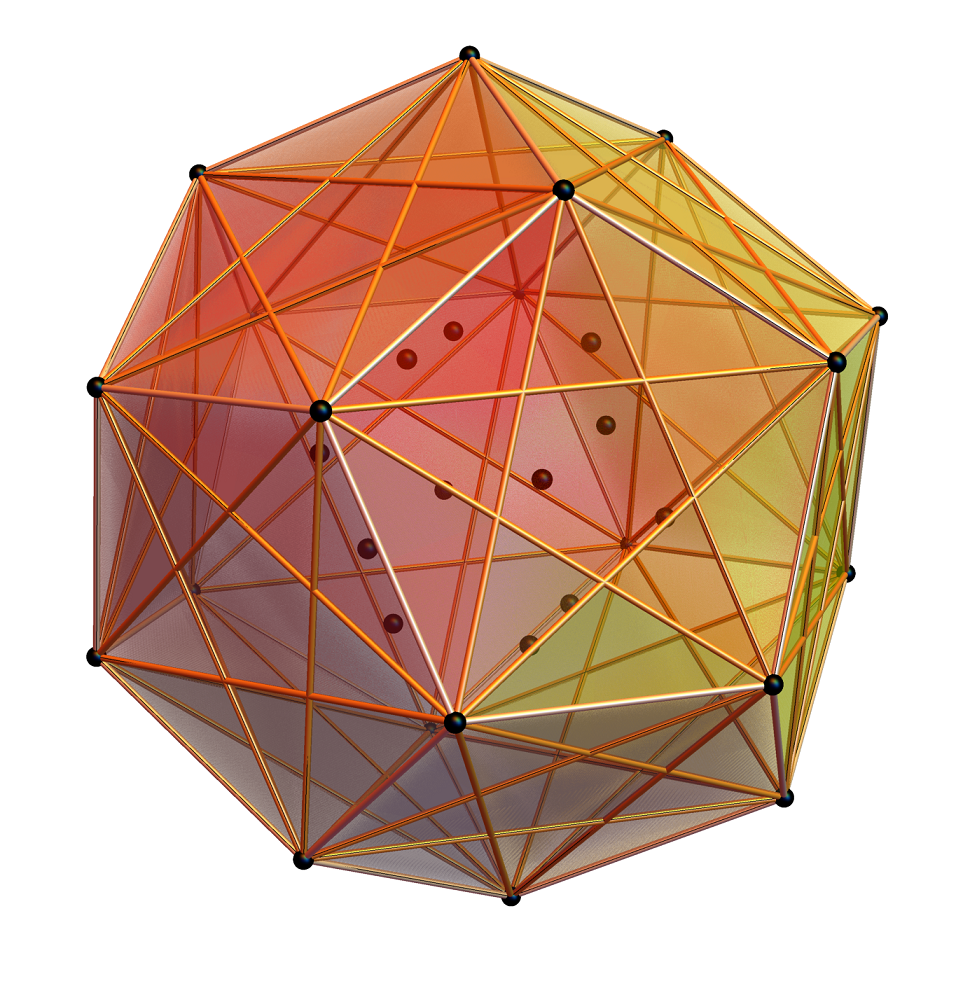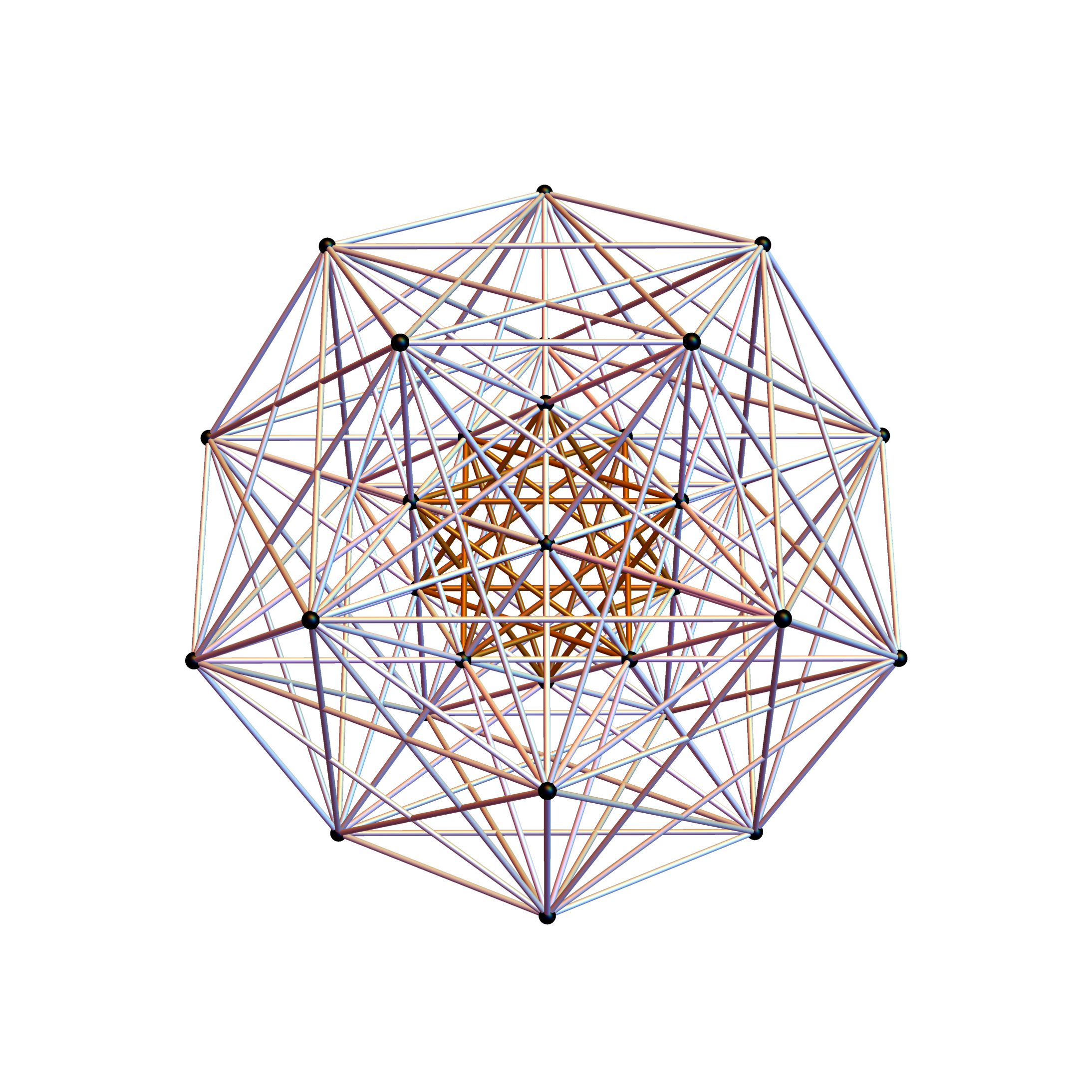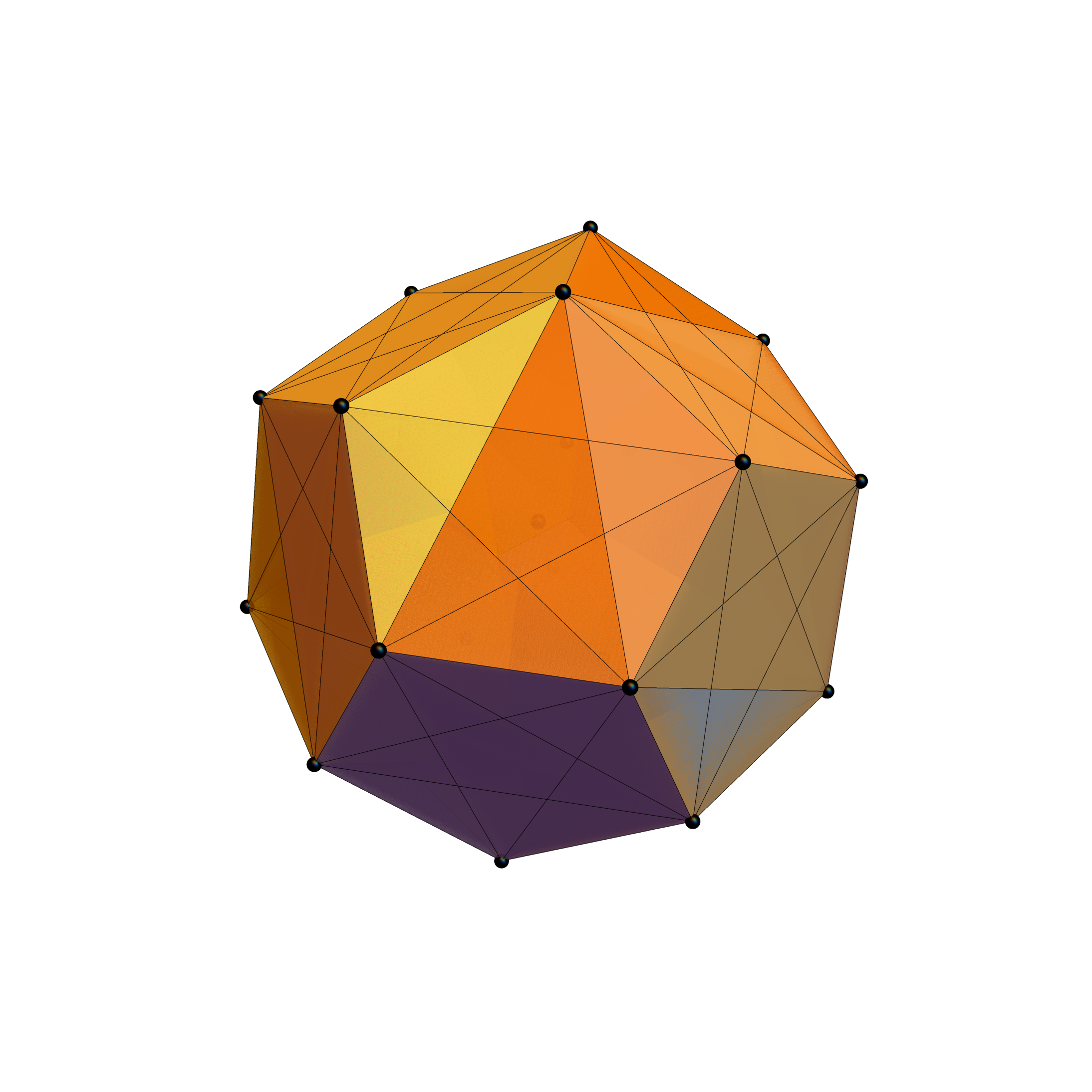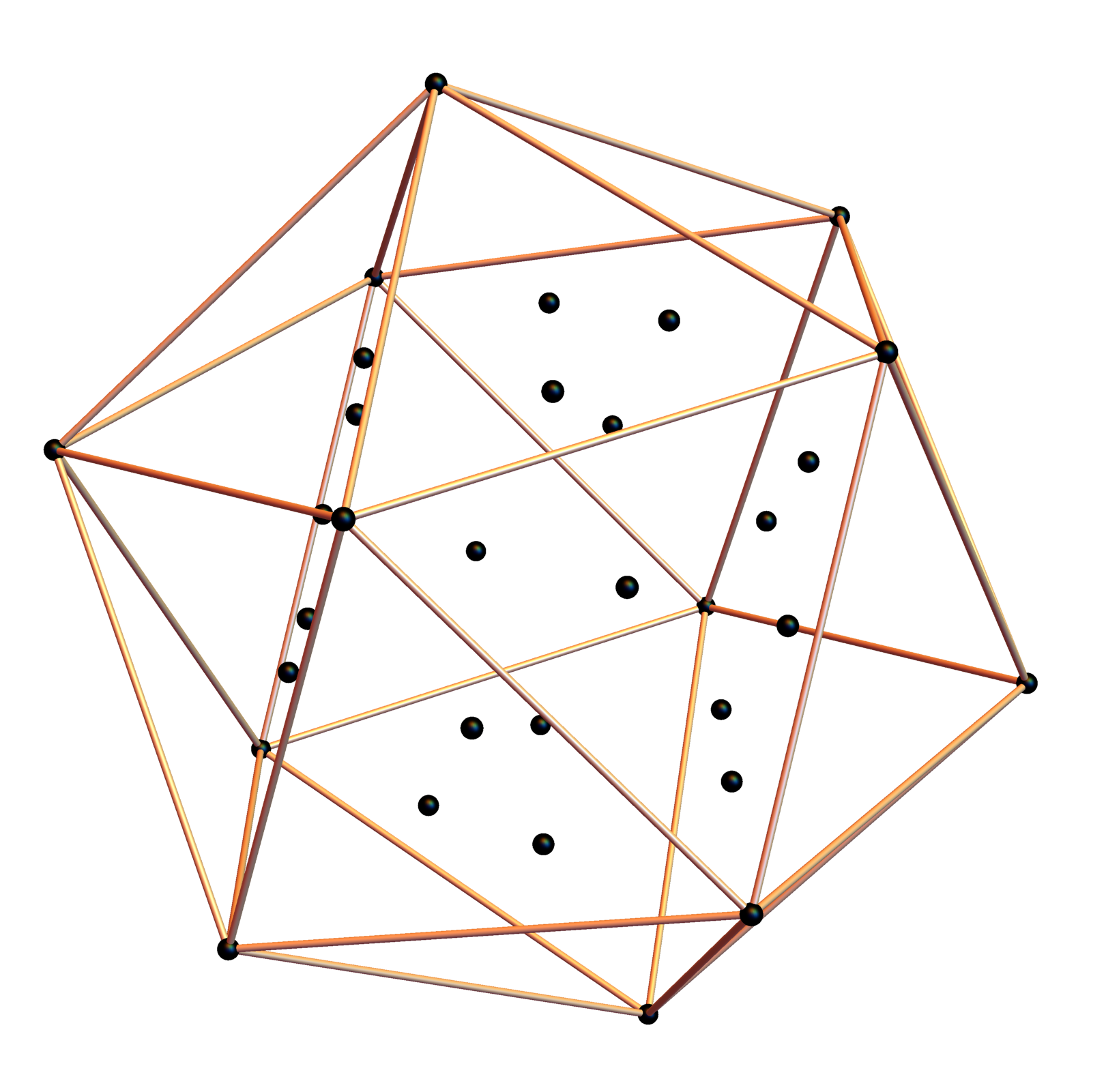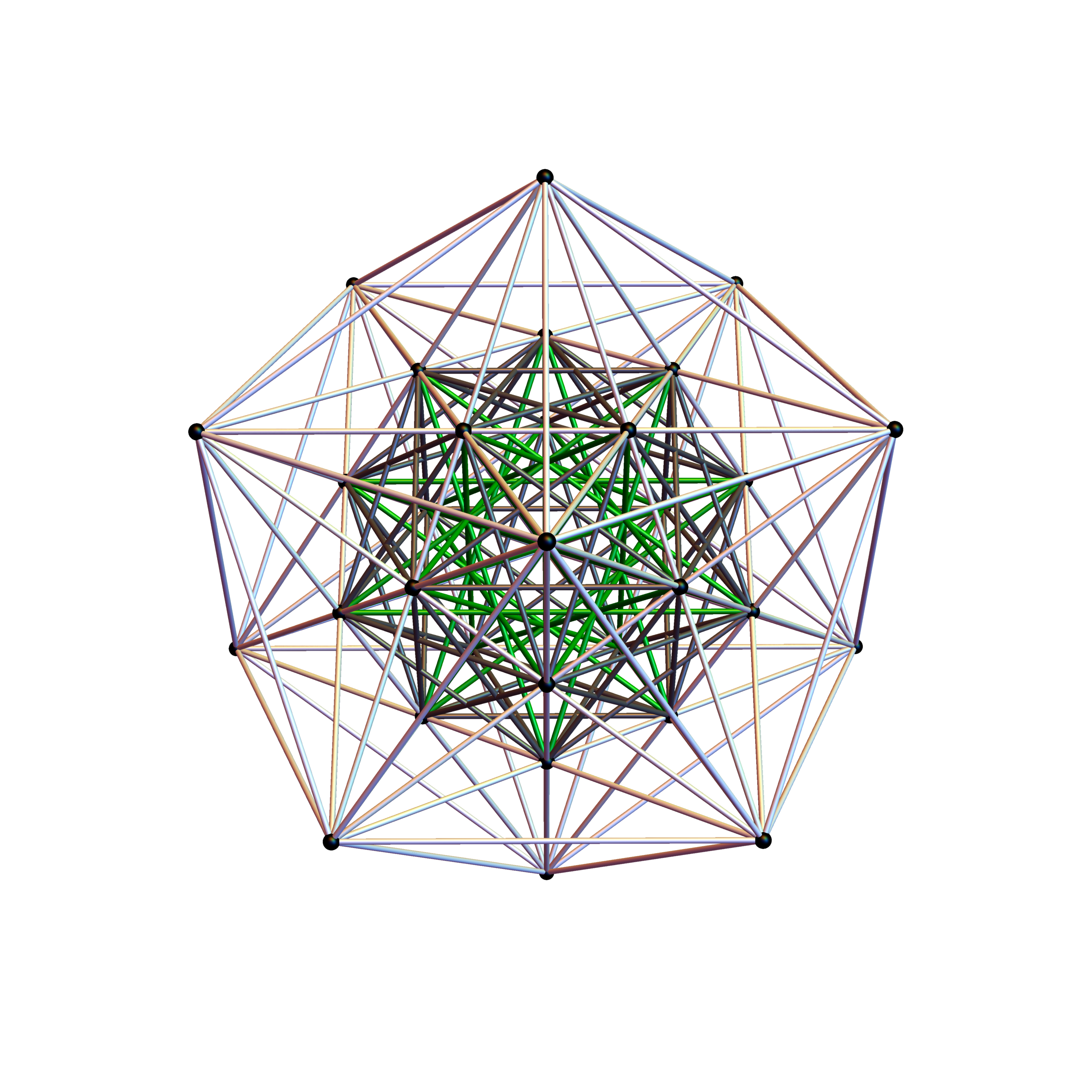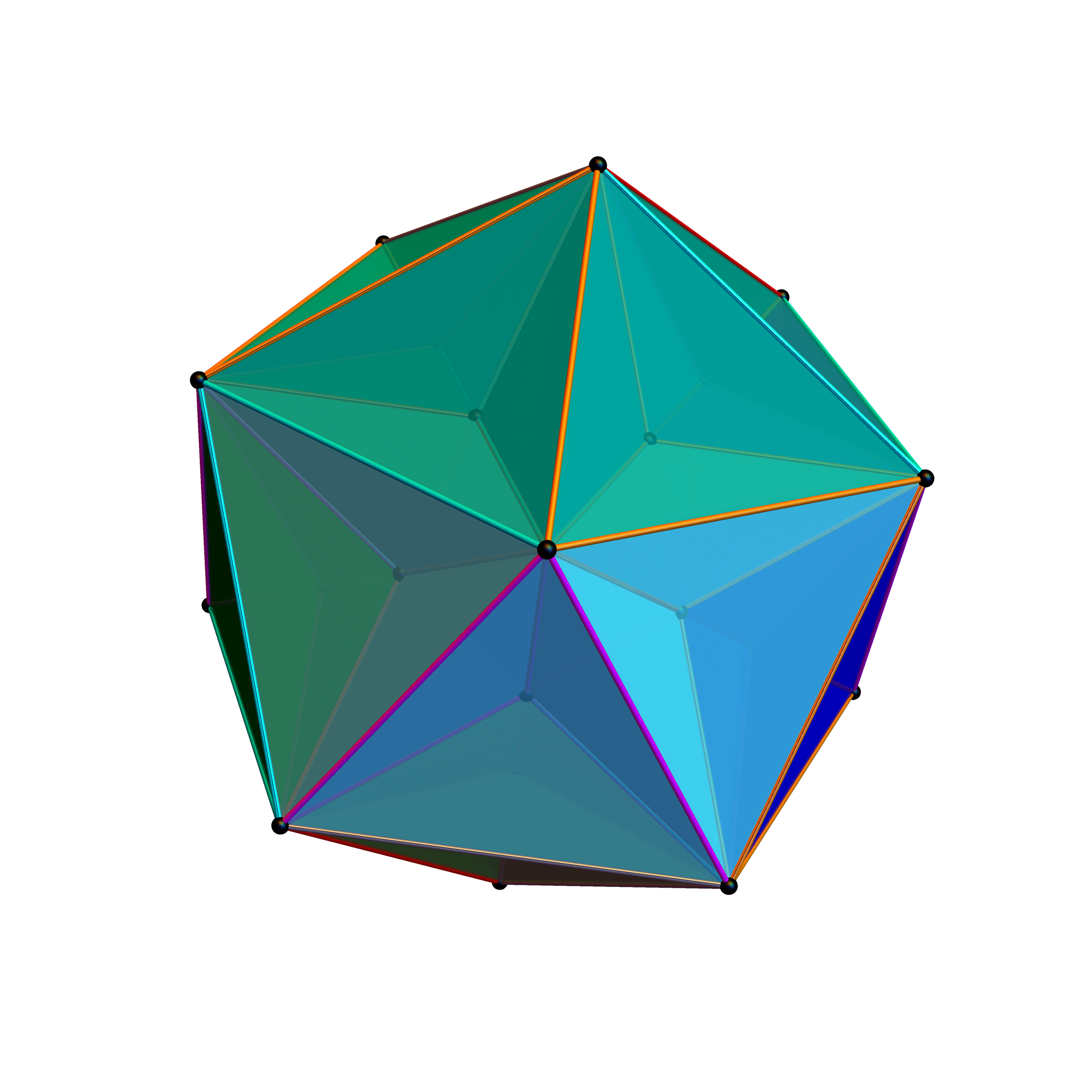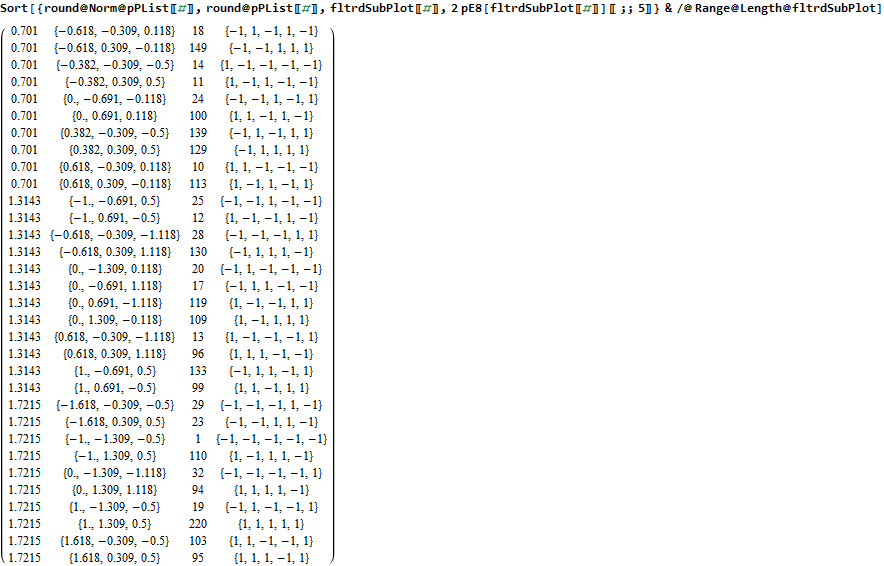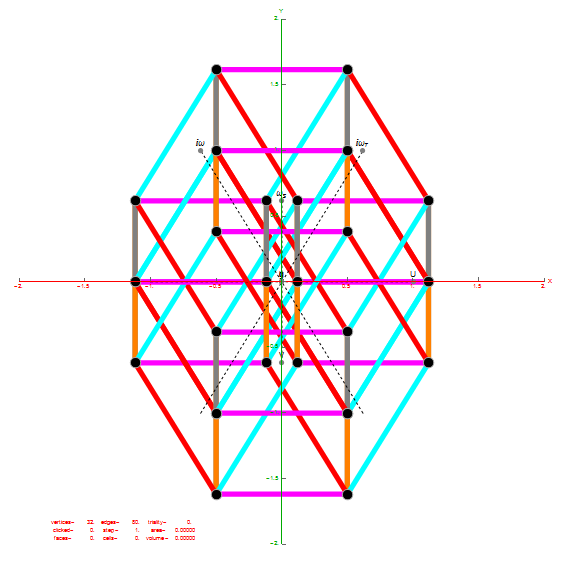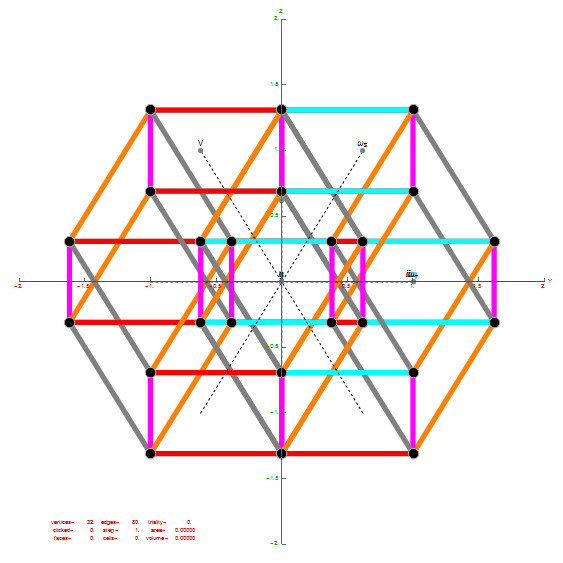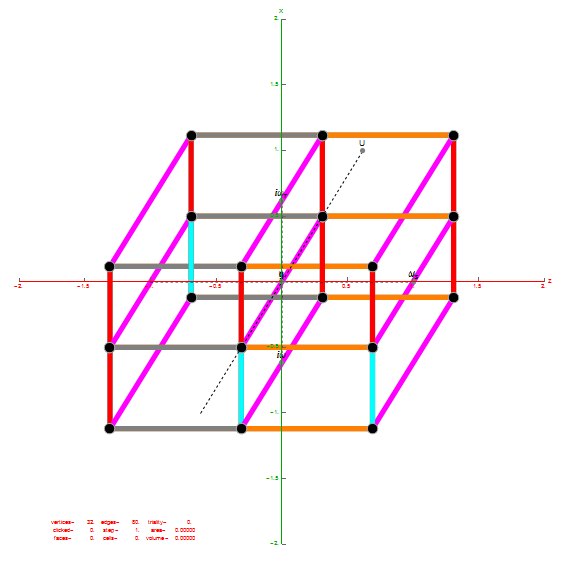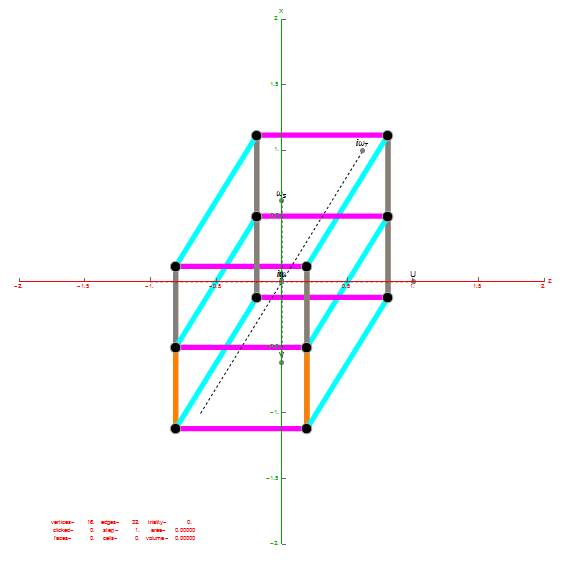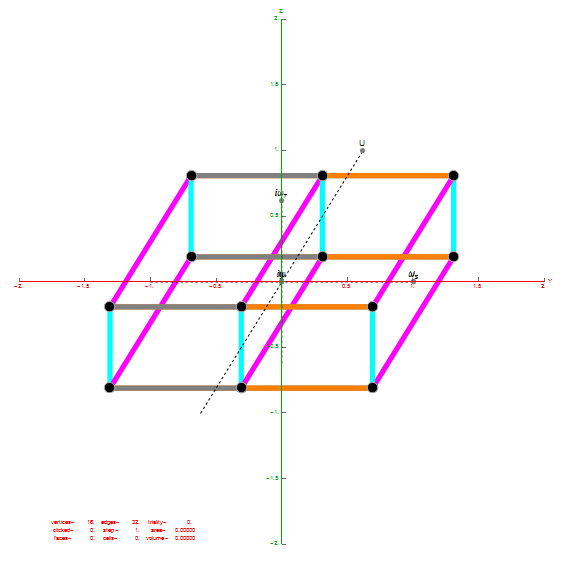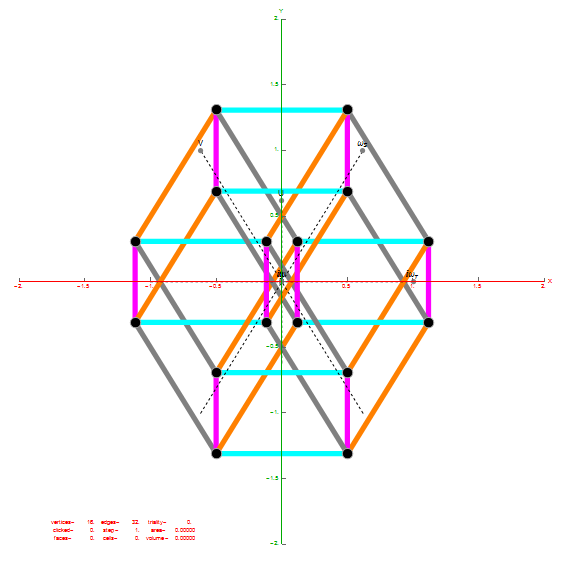Tag Archives: E8
History of the Universe Simulation
I’ve created a sort of place-holder demonstration that stubs out 60 orders of magnitude of the 15 major eras or epochs of the history of the Universe. Here are a few artifacts from that simulation (also available in the full interactive demonstration).
E8 Projected to the Concentric Hulls of H4+H4 Phi
The 8 concentric projected 3D hulls from the vertices of the 4_21 polytope (using the split real even E8 roots) and a projection basis from 3 of the 4 rows of the E8 to the H4+H4 Phi folding matrix produce from inner to outer (sorted by vertex Norm):
- 4 Points at the origin
- 2 Icosahedron
- 2 Dodecaheron
- 4 Icosahedron
- 1 Icosadodecahedron
- 2 Dodecaheron
- 2 Icosahedron
- 1 Icosadodecahedron
Projection Basis:
Looking at it as an orthonormal 3D projection of 2 600-cells (from the fully folded E8 to H4+H4 Phi), which is the same (as it should be), but rotated.
Here is just one 600-cell (interior).
Here is E7 doing the same procedure:
And again for E6
Wow – that is nice! Remember, you heard it here first!
BTW – if you find this information useful, or provide any portion of it to others, PLEASE make sure you cite this post. If you feel a blog post citation would not be an acceptable form for academic research papers, I would be glad to clean it up and put it into LaTex format in order to provide it to arXiv (with your academic sponsorship) or Vixra. Just send me a note at: jgmoxness@theoryofeverthing.org.
Rectified D6 to H3 Icosidodecahedrons
Icosidodecahedron (Rectified 6-Orthoplex)
While the interior vertices are shown, only the exterior 120 hull edges were used in the rectifications.
3D StereoLithography Model for 3D Printing
Rectified Icosidodecahedron (Cantellated 6-Orthoplex)
3D StereoLithography Model for 3D Printing
Twice Rectified (Cantellated) Icosidodecahedron
Rectified Rhombic Triacontahedrons
Rhombic Triacontahedron
While the interior vertices are shown, only the exterior 60 hull edges were used in the rectifications.
3D StereoLithography Model for 3D Printing
Rectified Rhombic Triacontahedron
3D StereoLithography Model for 3D Printing
Twice Rectified (Cantellated) Rhombic Triacontahedron
Perspective Enhanced HyperCube Projections to 3D
These objects are projected using an {x,y,z} orthonormal basis. For n={5,6,7} I add a small delta (.2) to {x,y,z} basis vectors in columns {n-2,n-1,n} in order to keep vertices from overlapping. There is an enhanced perspective applied to vertex location as well.
4Cube
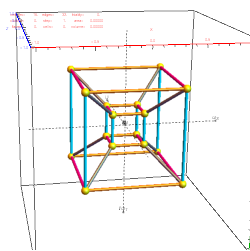
4Cube 3D StereoLithography (STL) model for 3D Printing
5Cube
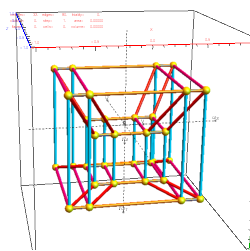
5Cube 3D StereoLithography (STL) model for 3D Printing
6Cube

6Cube 3D StereoLithography (STL) model for 3D Printing
7Cube
Rotating 6D D6 to 3D Pentagon Centered H3 for 2D Decagon Symmetry
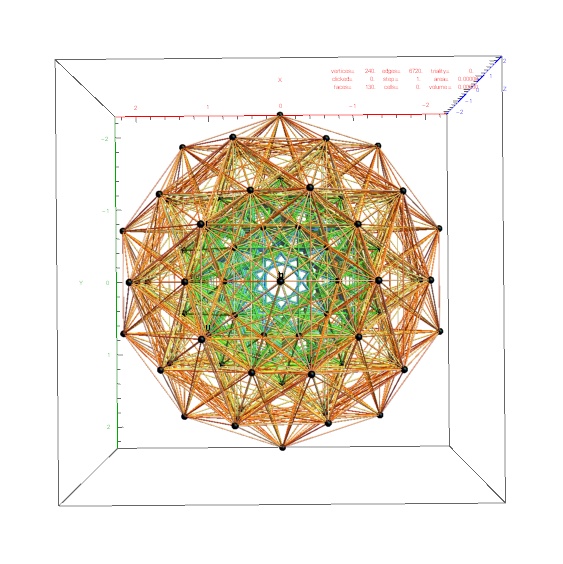
Interestingly, these 2D and 3D projections includes all 240 vertices and 6720 edges of E8 with the same 2D and 3D projection. Only the vertex and edge overlap are different.
The D6 to H3 projection based on 3 rows of the E8 to H4+H4 Phi folding matrix.

The rotation off of the D6 to H3 projection based on the E8 to H4+H4 Phi folding matrix is

Using this rotated basis, we now show rectified D6 (Cantellated 6-Orthoplex t0,2{3,3,3,3,3,4})

6 Demicubes Projected via H4 Folding Matrix
Taking the 32 vertex 6 Demicube with an even number of -1 elements and projecting with 3 of the 4 rows of the H4 folding matrix gives an dodecahedron hull with 12 vertices and 30 edges on the hull out of 240 edges of 6D length Sqrt[2]).
BTW – if you find this information useful, or provide any portion of it to others, PLEASE make sure you cite this post. If you feel a blog post citation would not be an acceptable form for academic research papers, I would be glad to clean it up and put it into LaTex format in order to provide it to arXiv (with your academic sponsorship) or Vixra. Just send me a note at: jgmoxness@theoryofeverthing.org.
While taking the 32 vertex 6 Demicube with odd number of -1 elements and projecting with 3 of the 4 rows of the H4 folding matrix gives the icosahedron with 20 vertices and 30 edges on the hull out of 240 edges of 6D length Sqrt[2]).
Rhombic Triacontahedron Animations
Best Viewed in HD
3D Stereoscopic
Red-Cyan Stereoscopic
BTW – if you find this information useful, or provide any portion of it to others, PLEASE make sure you cite this post. If you feel a blog post citation would not be an acceptable form for academic research papers, I would be glad to clean it up and put it into LaTex format in order to provide it to arXiv (with your academic sponsorship) or Vixra. Just send me a note at: jgmoxness@theoryofeverthing.org.
More Symmetries of E8 folding, including 5-Cube and 4-Cube (Tesseract)
The same 3 (projection basis vectors that produce the H3 Icosadodecahedron from D6 and the Rhombic Triacontahedron from the 6-Cube (or 2 sets from the 128 1/2 Integer BC8 vertices of E8) form lower dimensional objects within E8.
For more information on the above symmetries, see this post.
The 3D object identification has been confirmed by …
32 vertex 5-Cube with 80 5D Norm’d Unit Length Edges
Projection Basis Vectors {x,y,z}:

3D Rhombic 20-Hedron Outer Hull of 22 Vertices
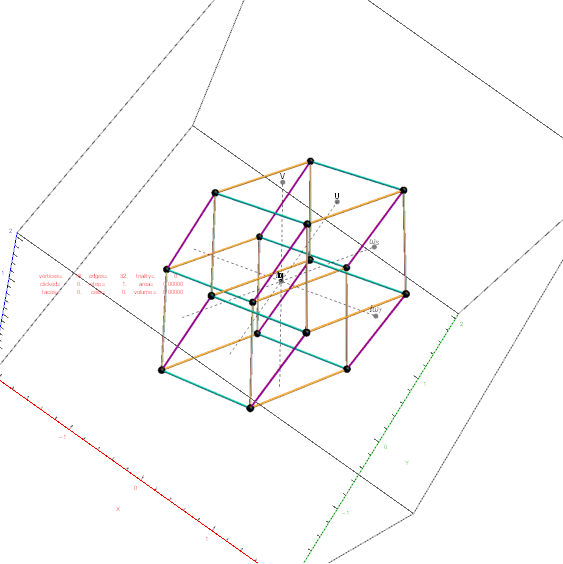
The edge coloring on these projections are defined by which of the 6 dimensional axis the edge aligns with.
10 Interrior Vertices with 10 Edges
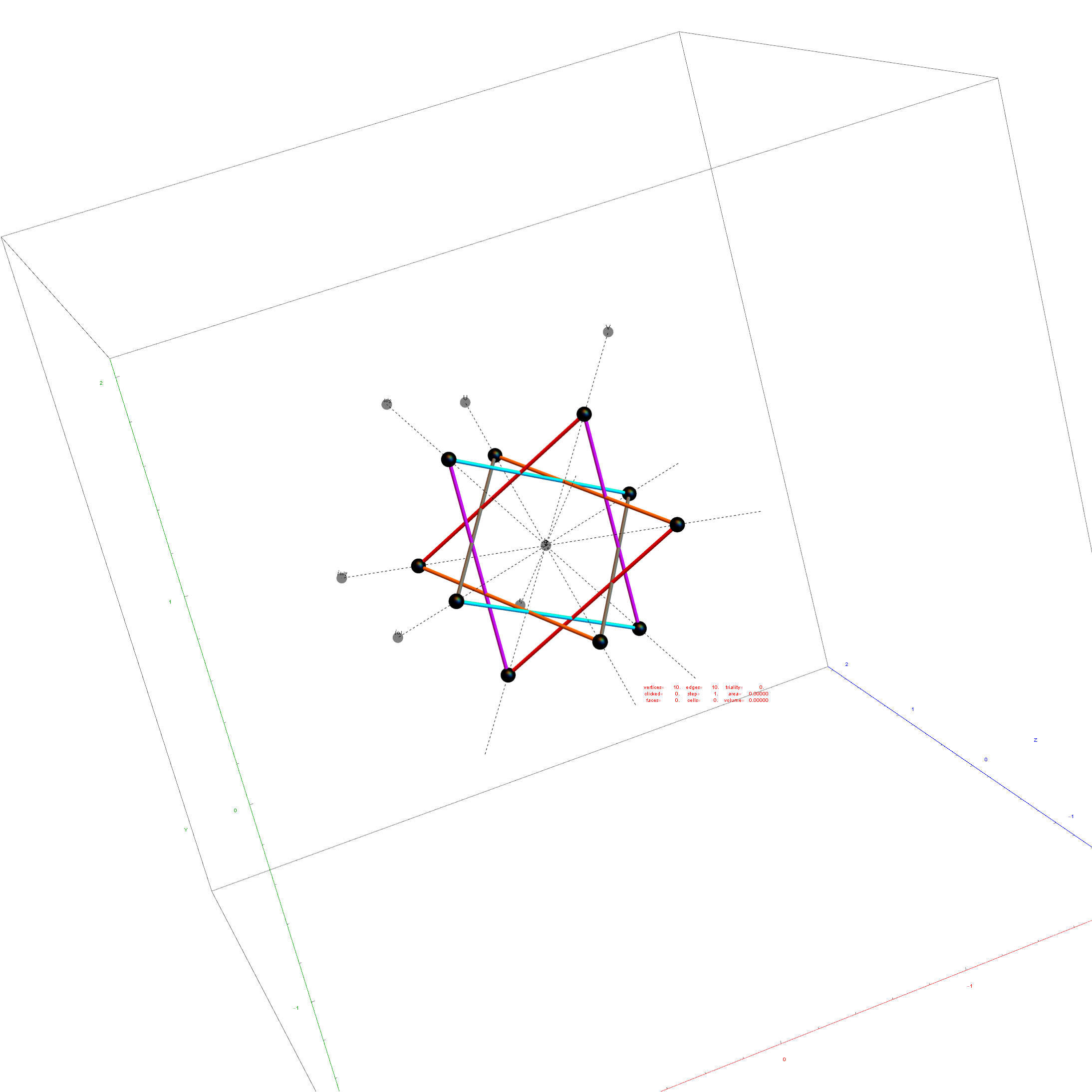
All Vertices in 3D
16 vertex 4-Cube with 32 4D Norm’d Unit Length Edges
Projection Basis Vectors {x,y,z}:

3D Rhombic Dodecahedron with 2 Interior Vertices
BTW – if you find this information useful, or provide any portion of it to others, PLEASE make sure you cite this post. If you feel a blog post citation would not be an acceptable form for academic research papers, I would be glad to clean it up and put it into LaTex format in order to provide it to arXiv (with your academic sponsorship) or Vixra. Just send me a note at: jgmoxness@theoryofeverthing.org.

